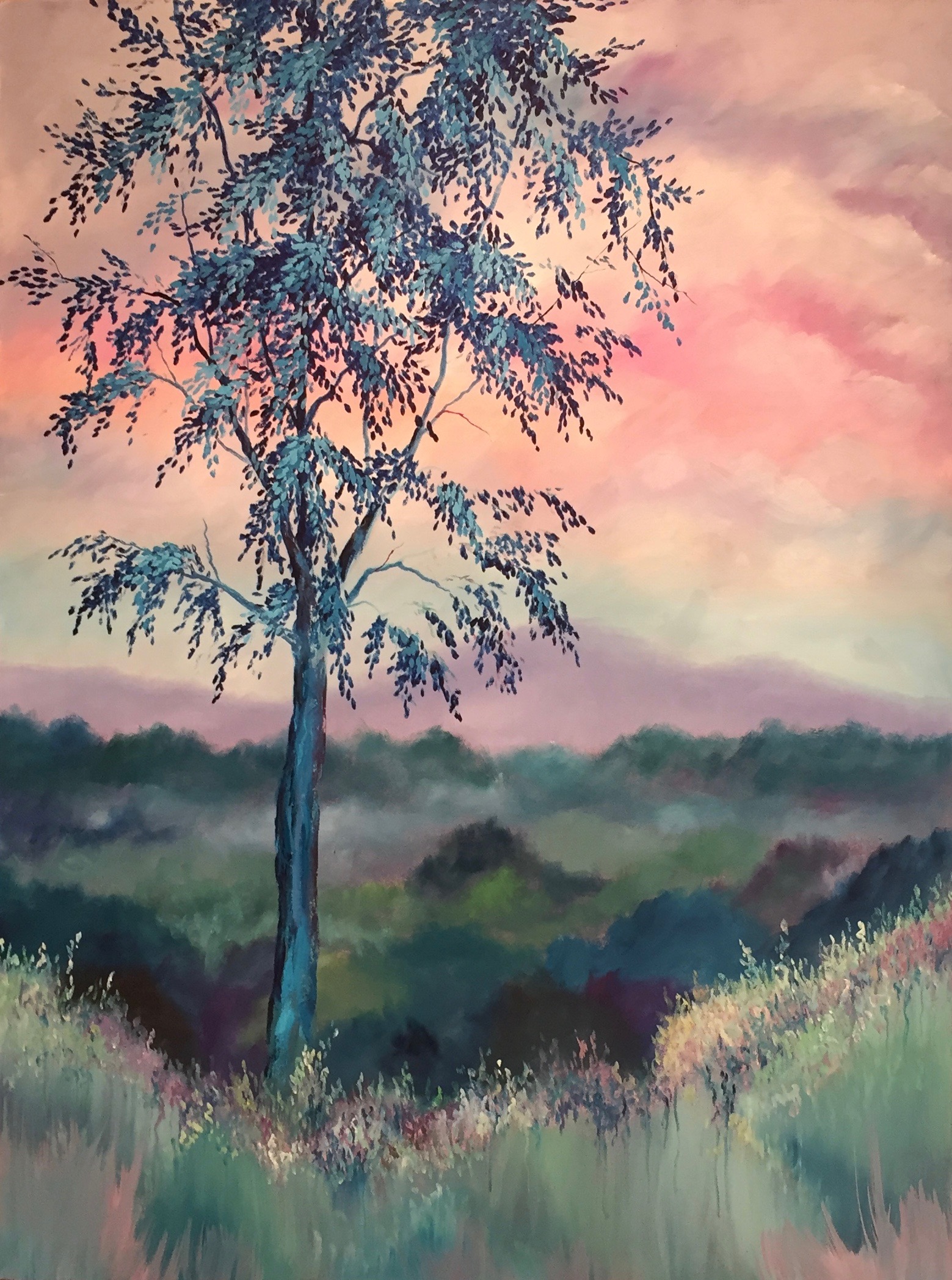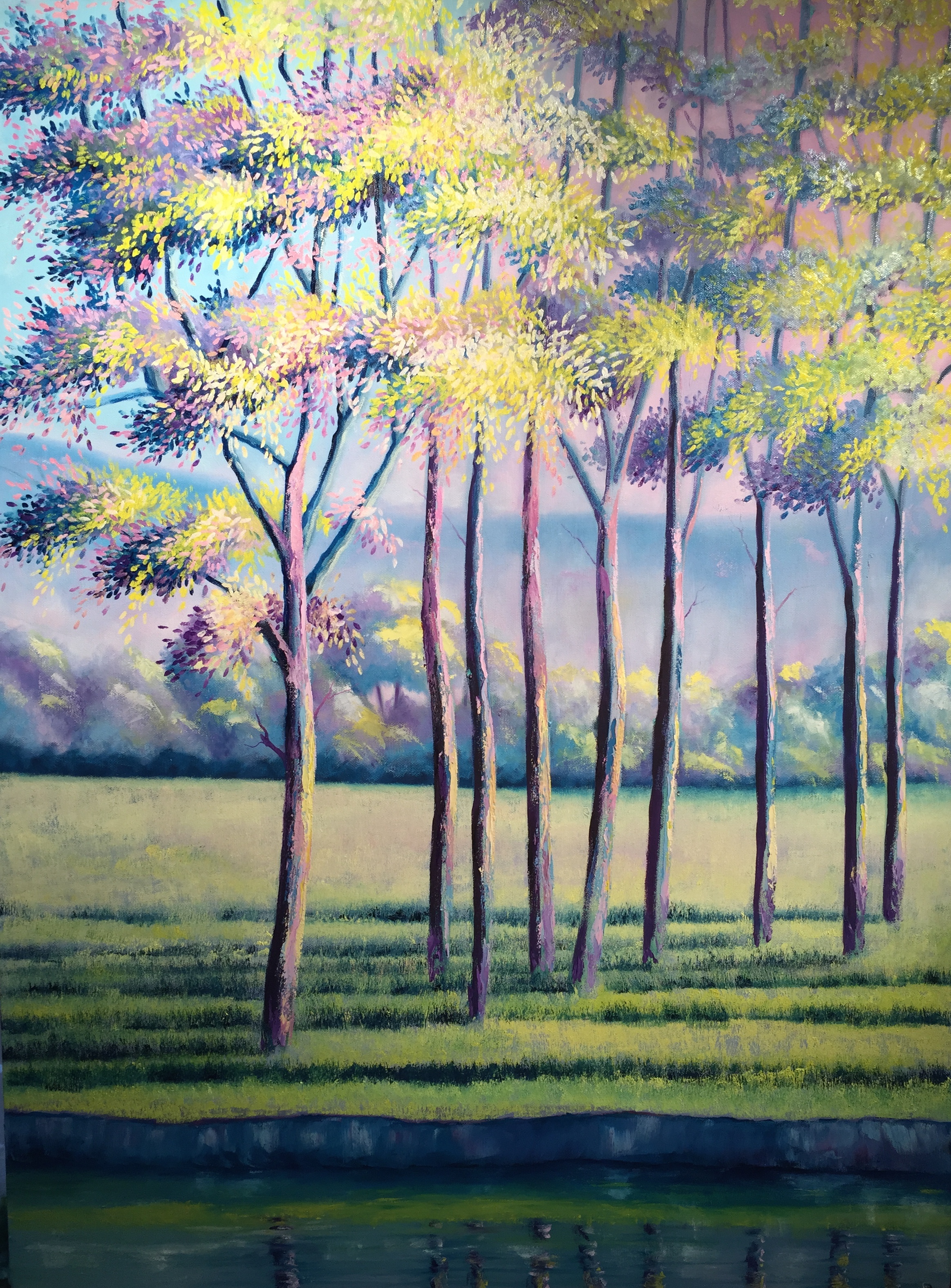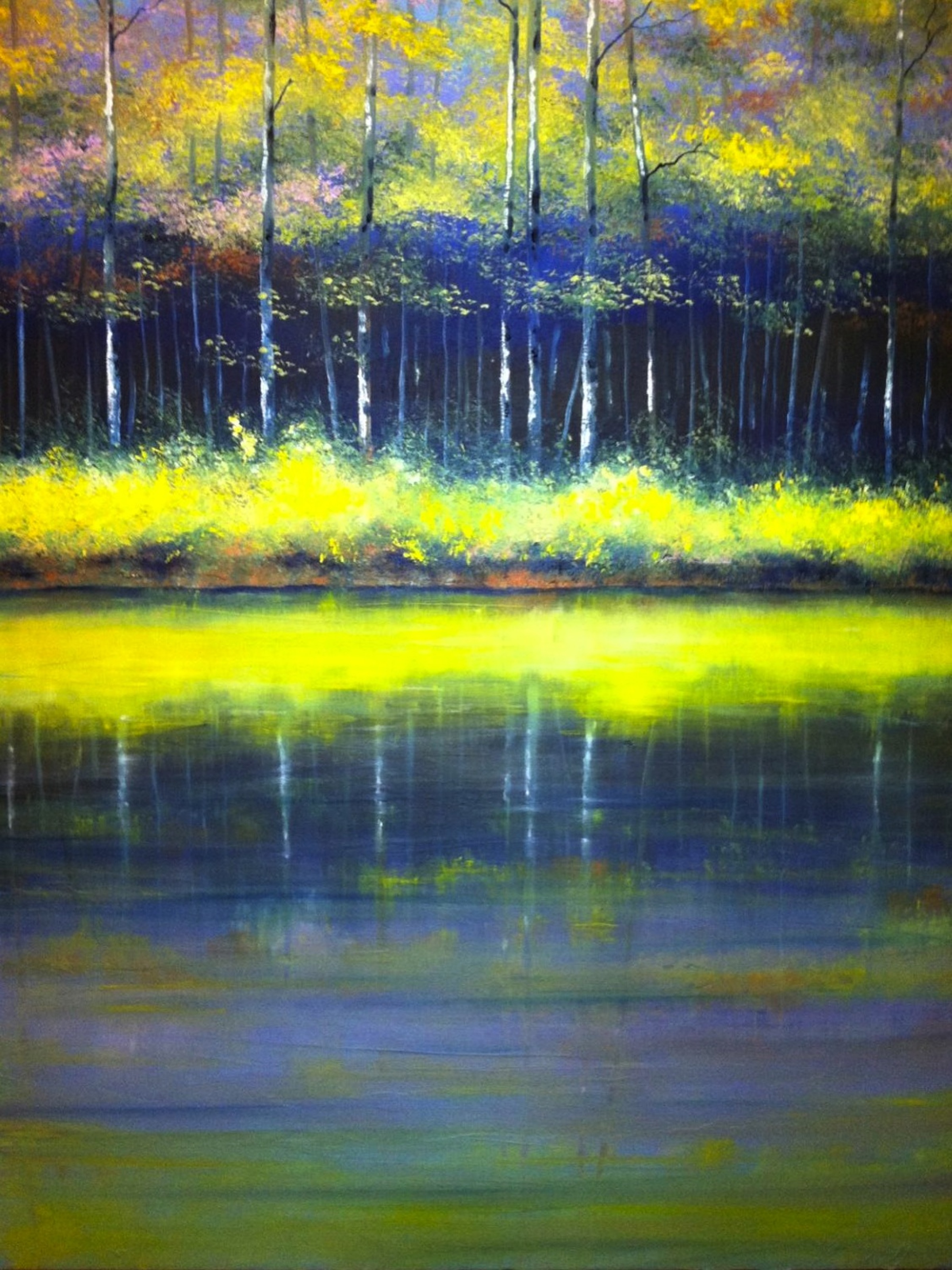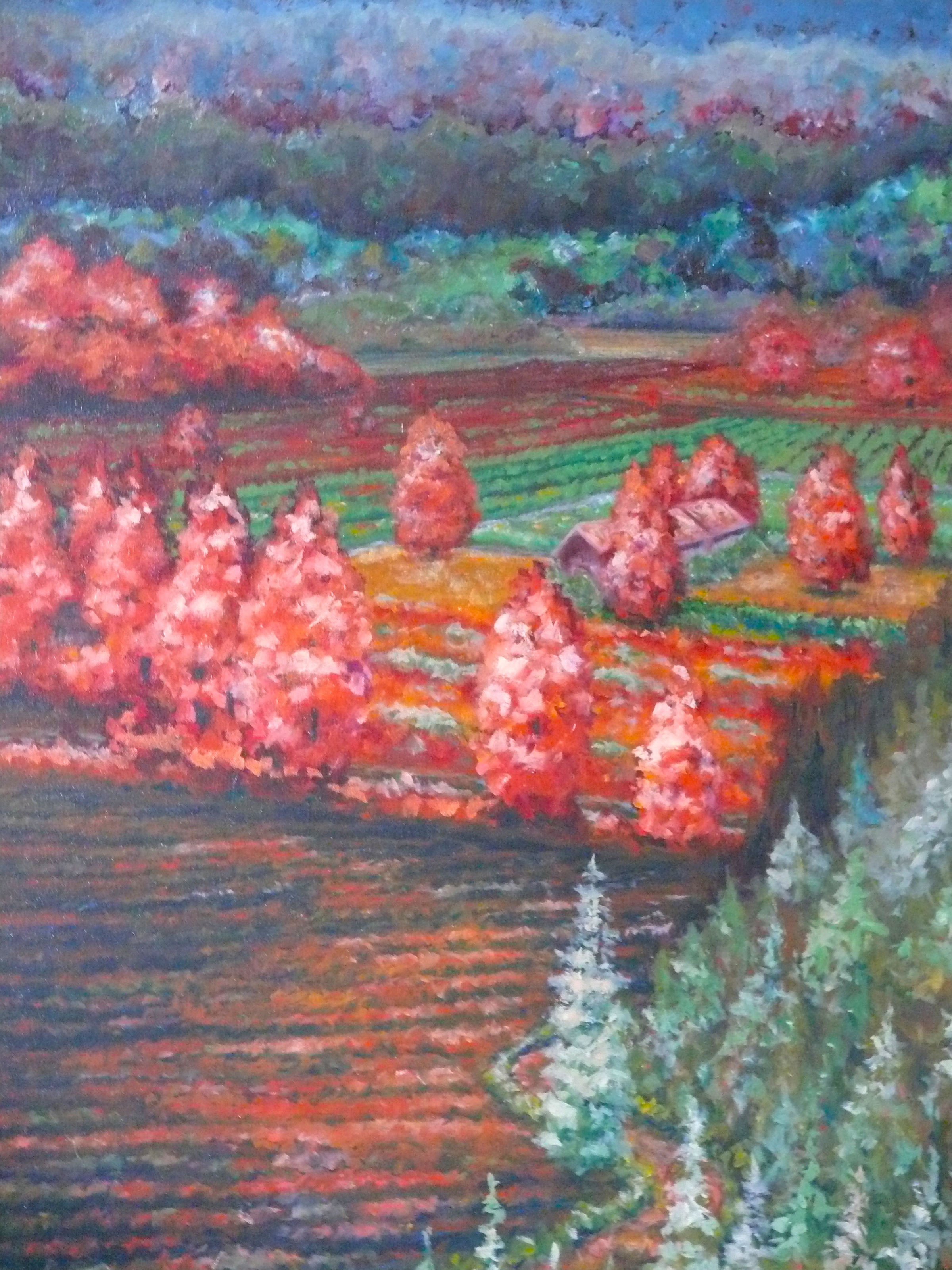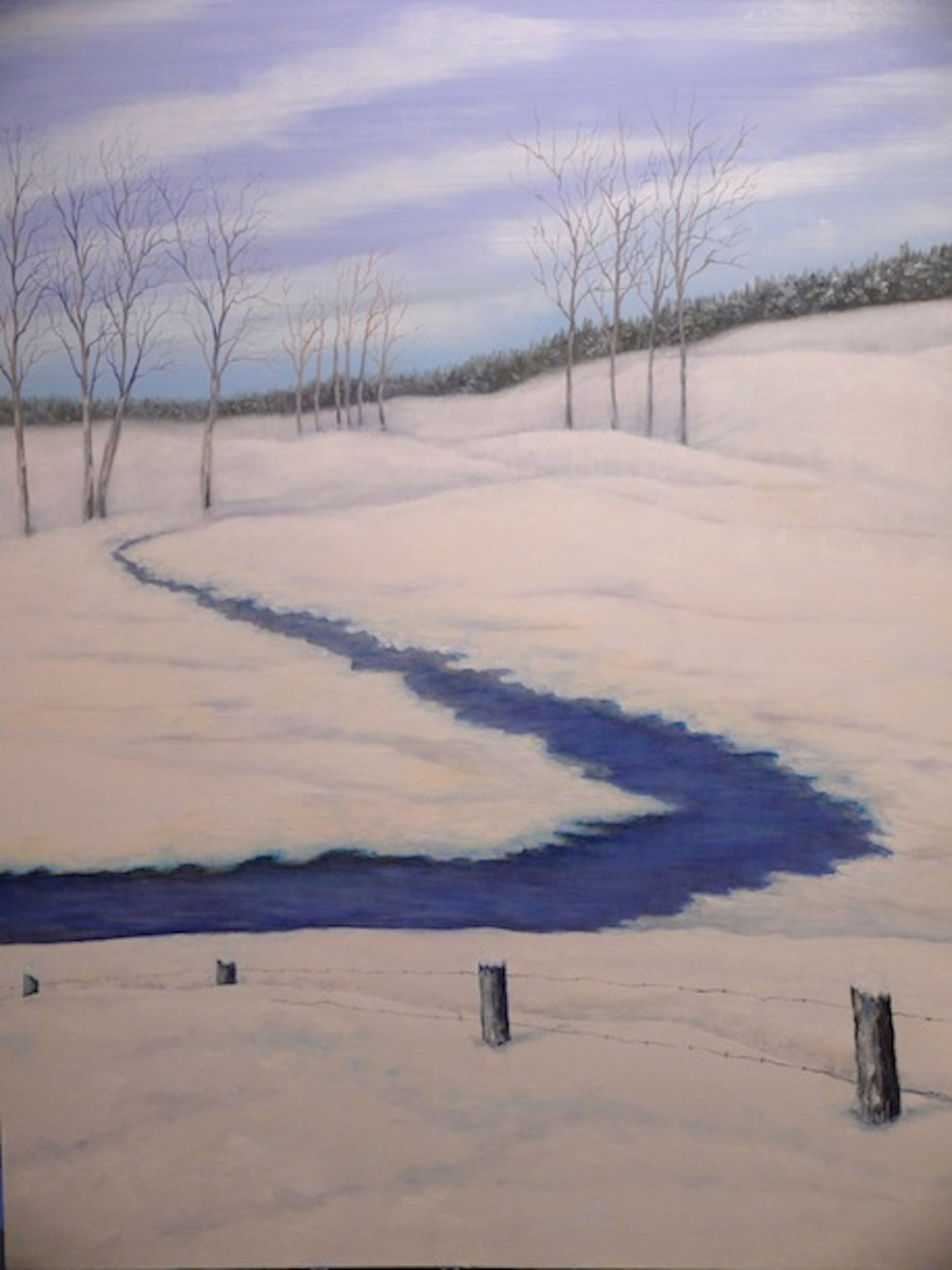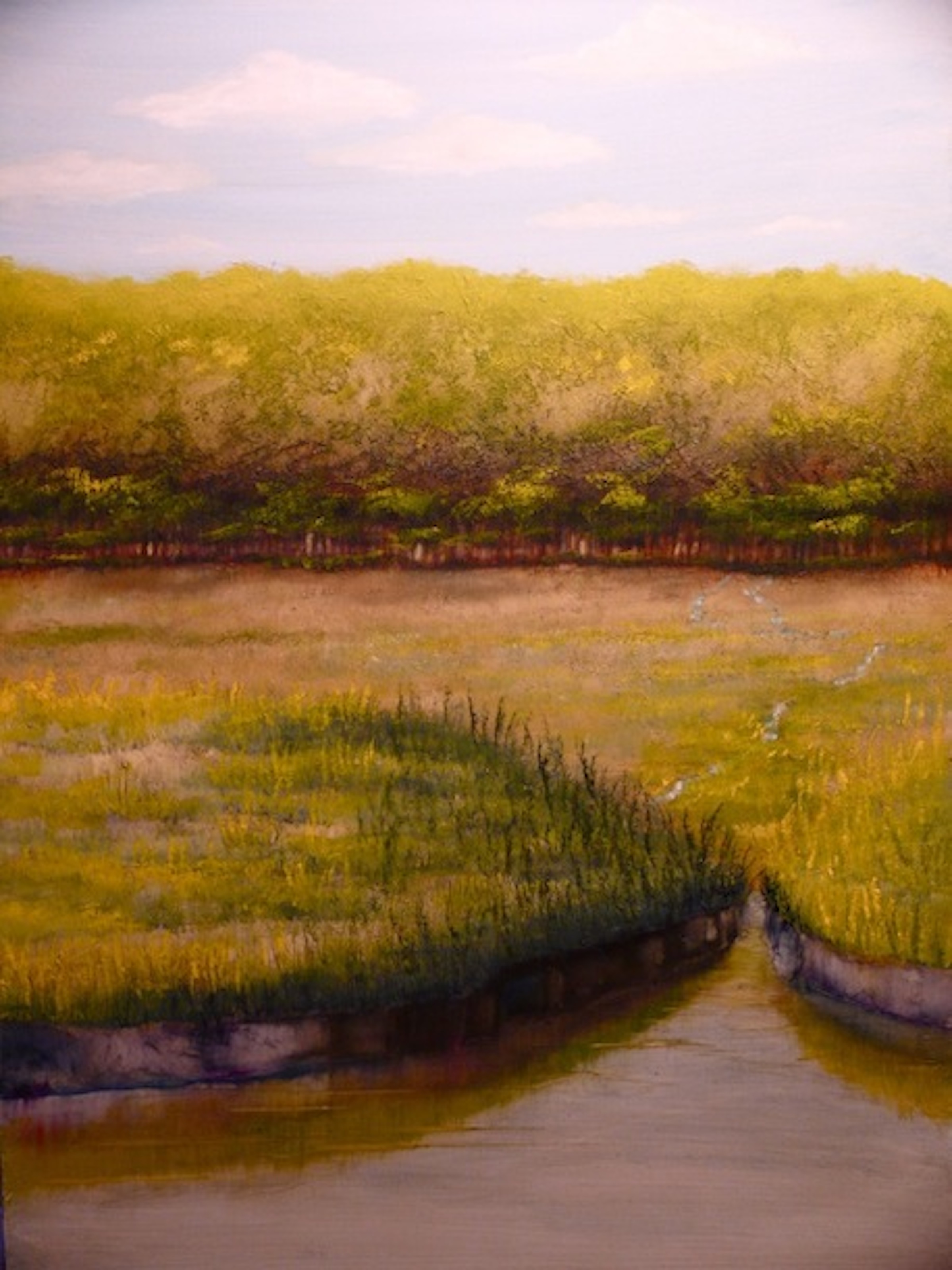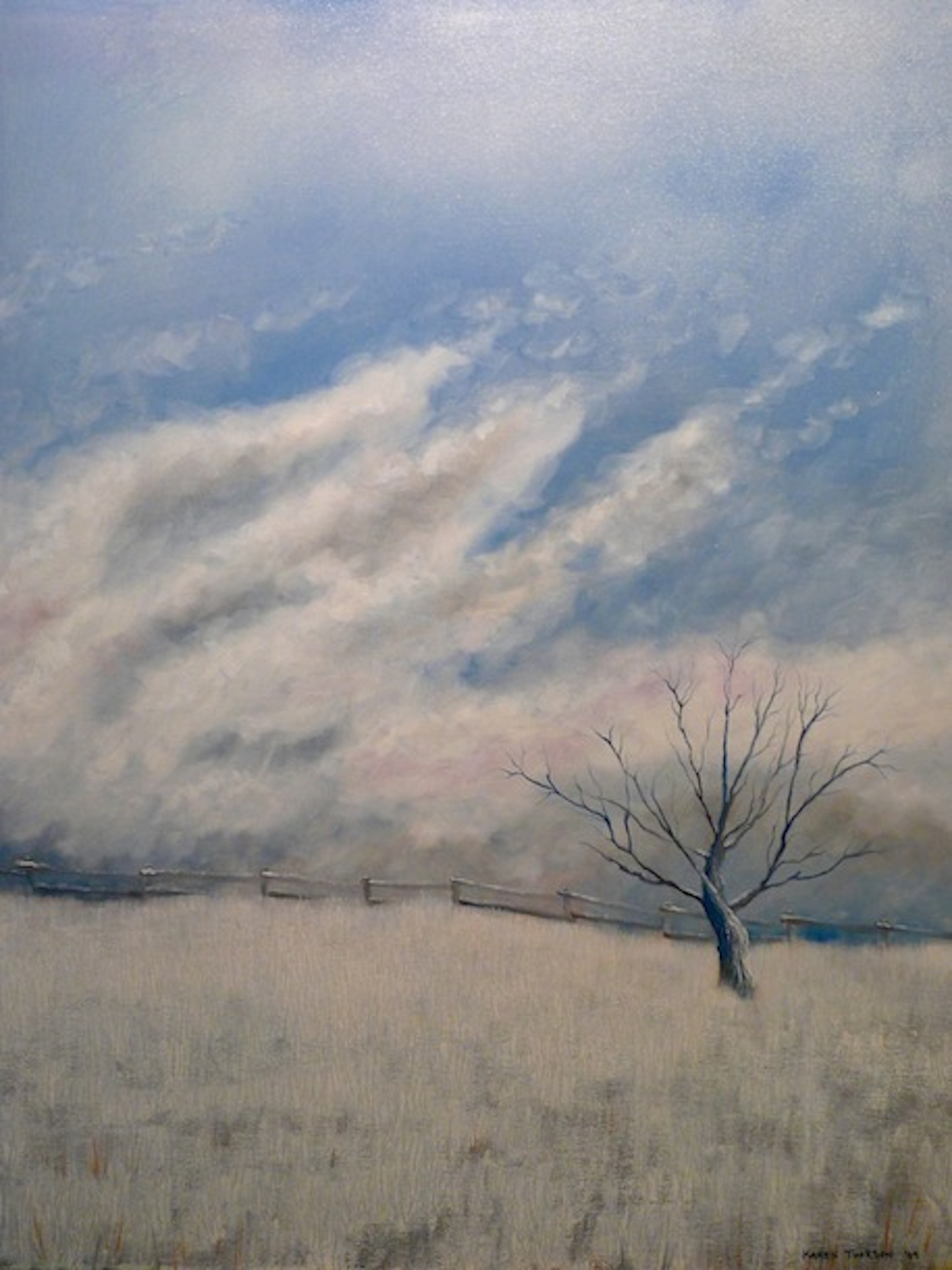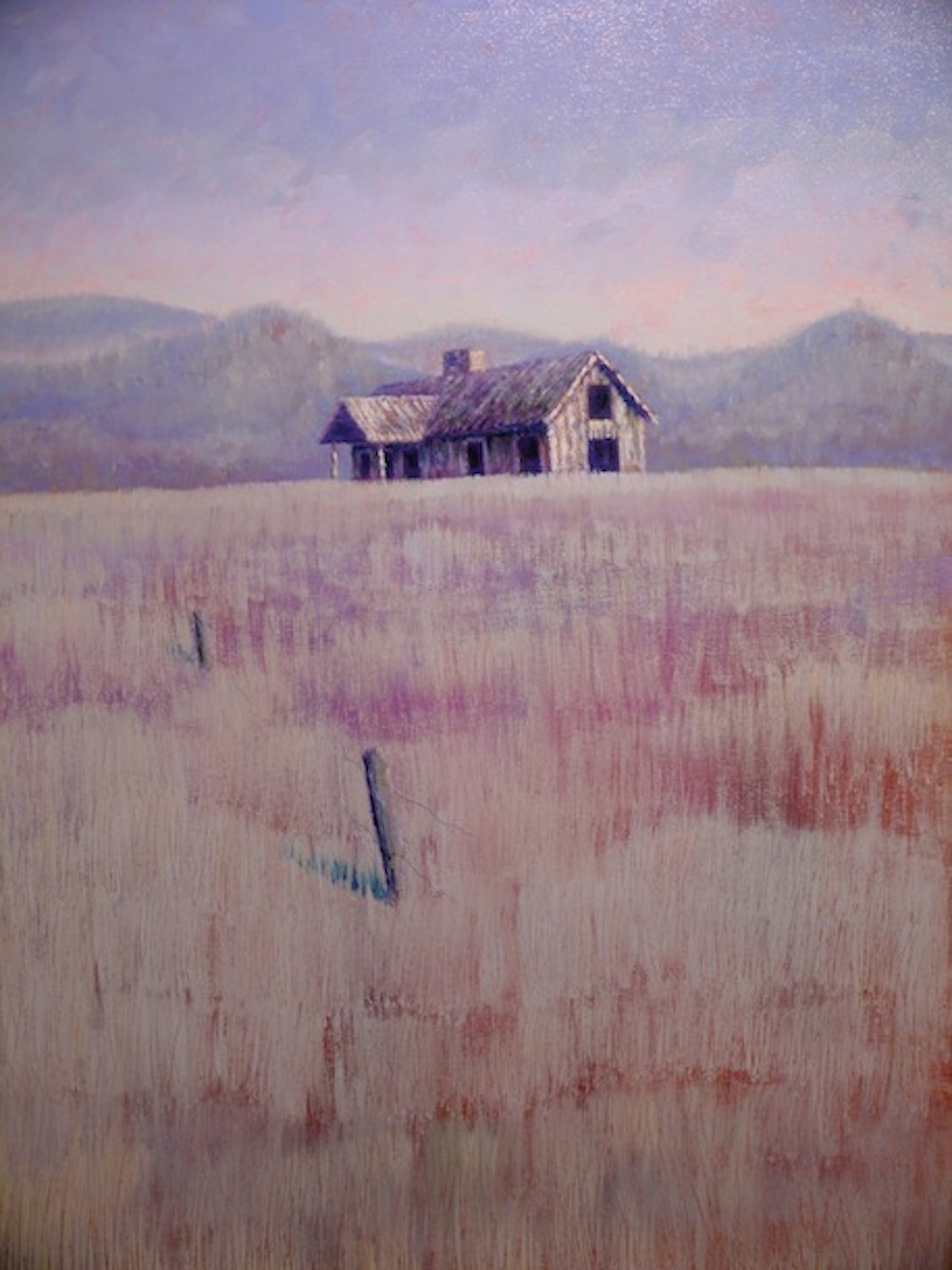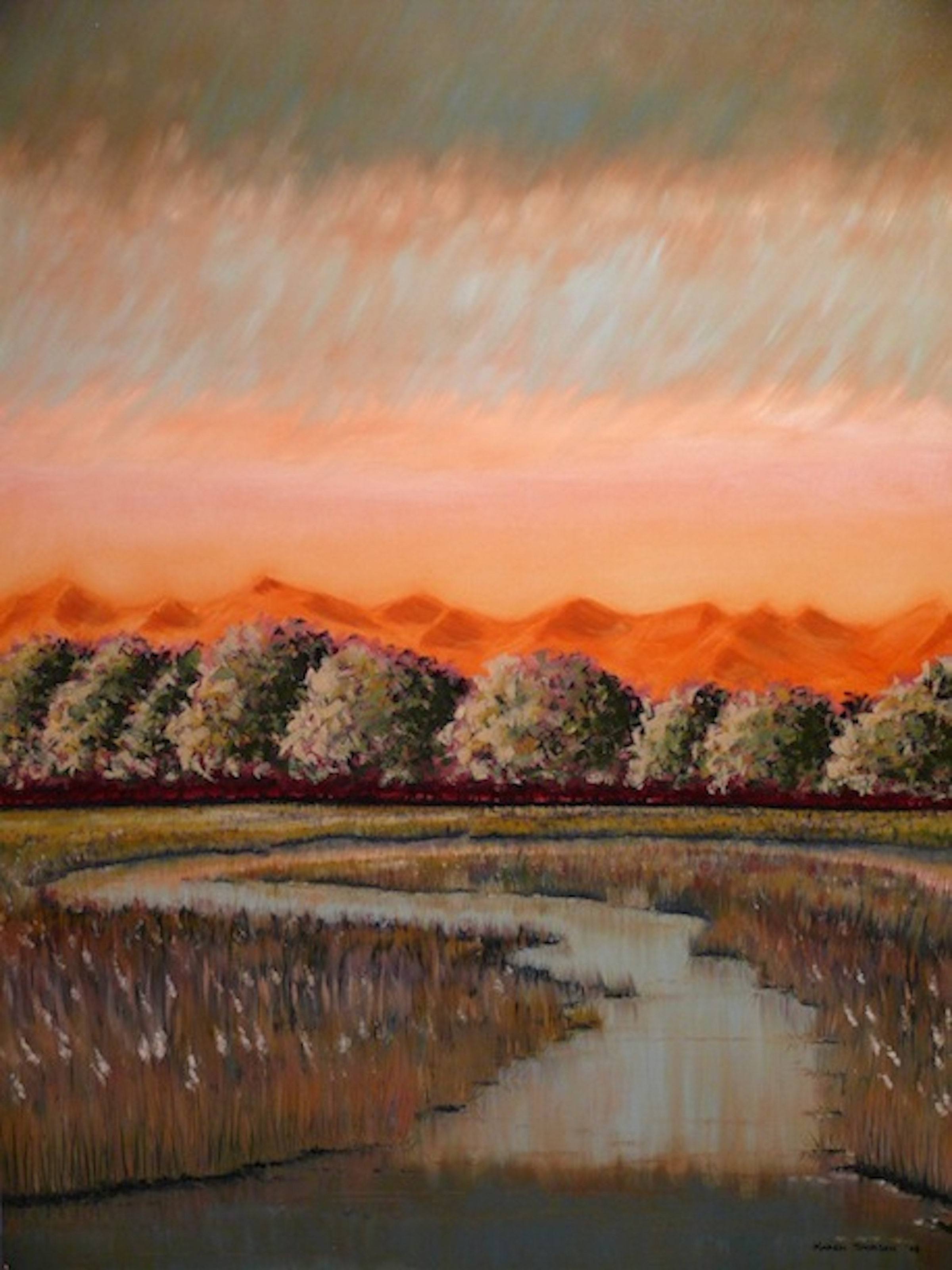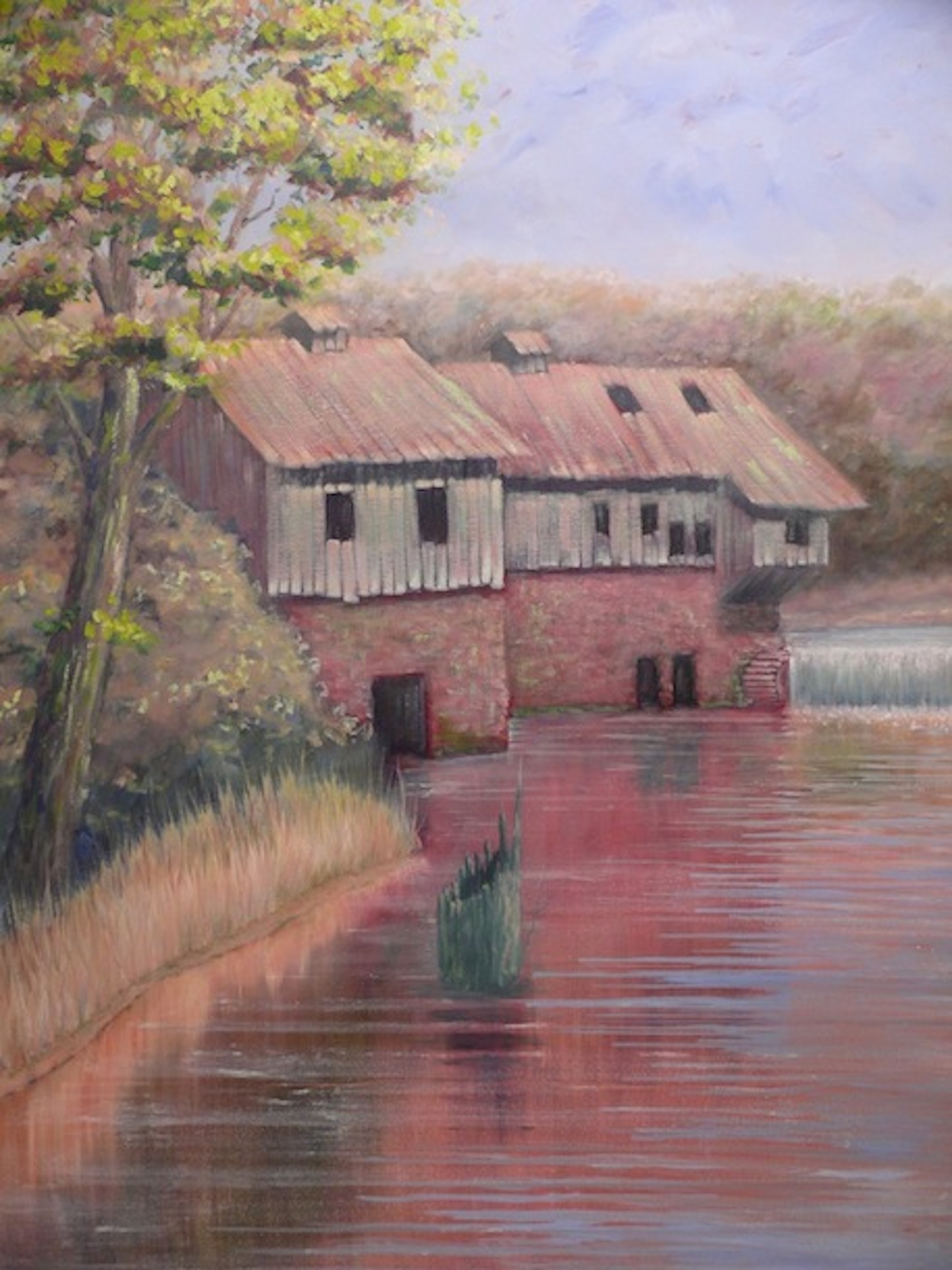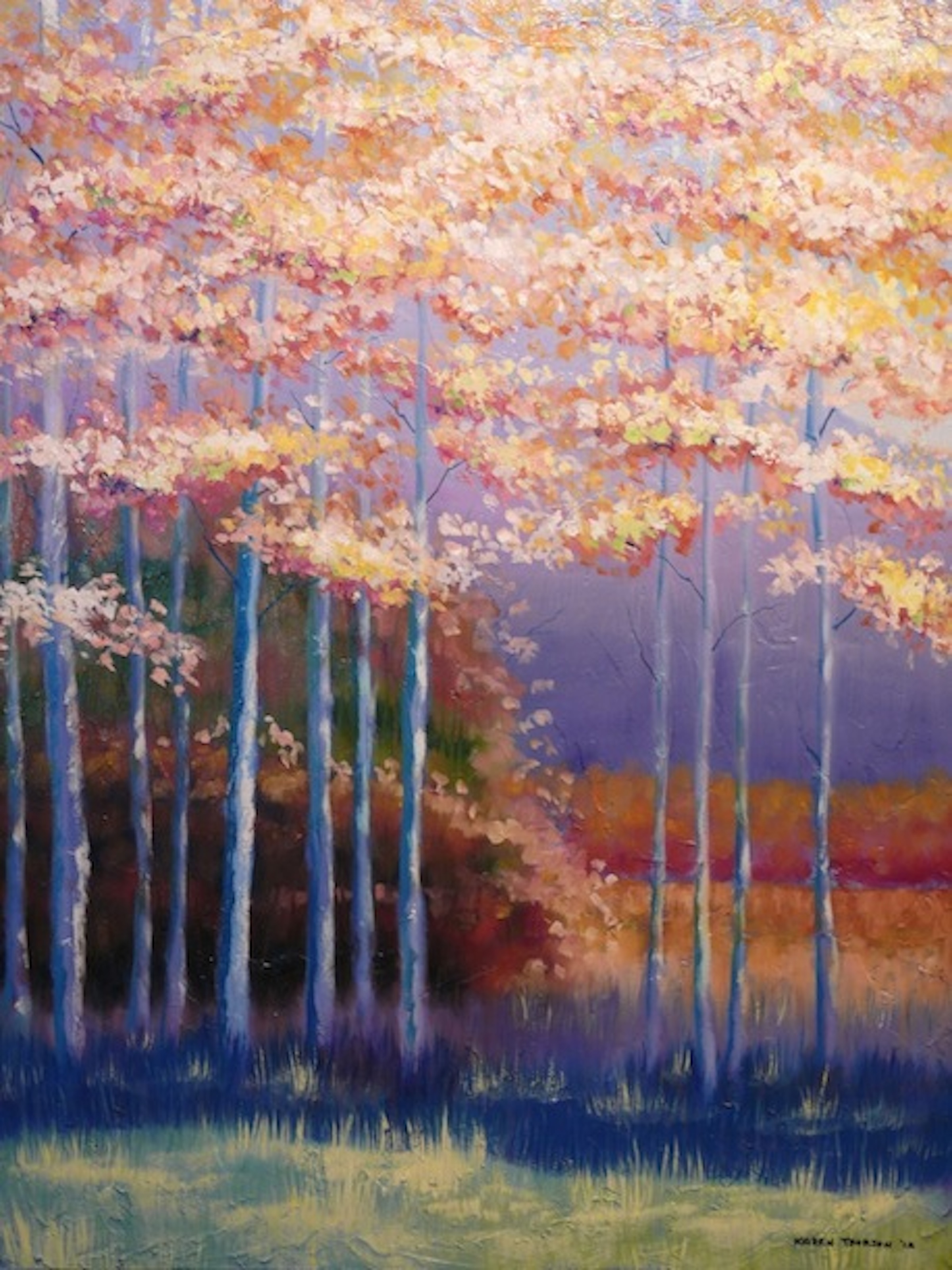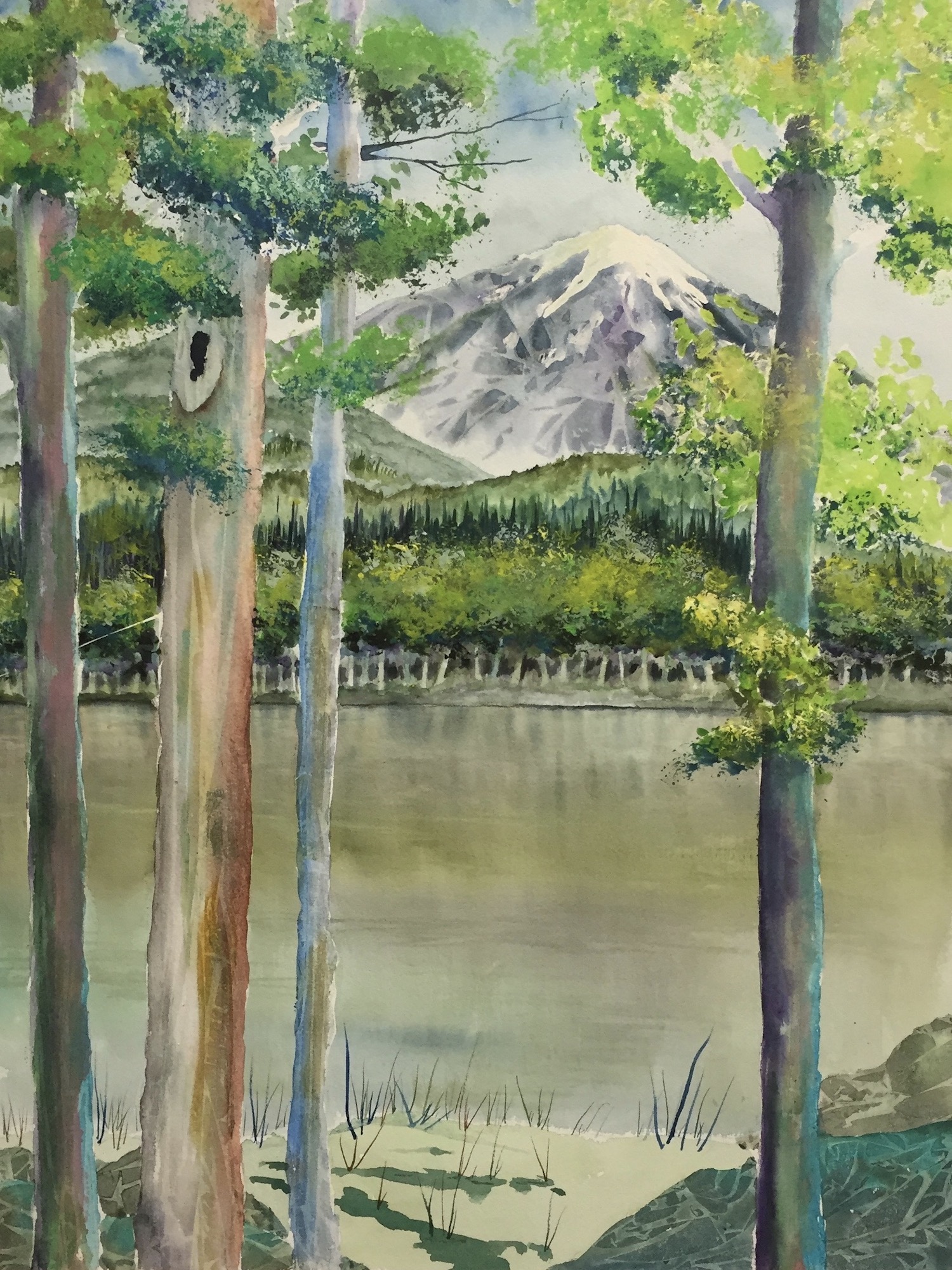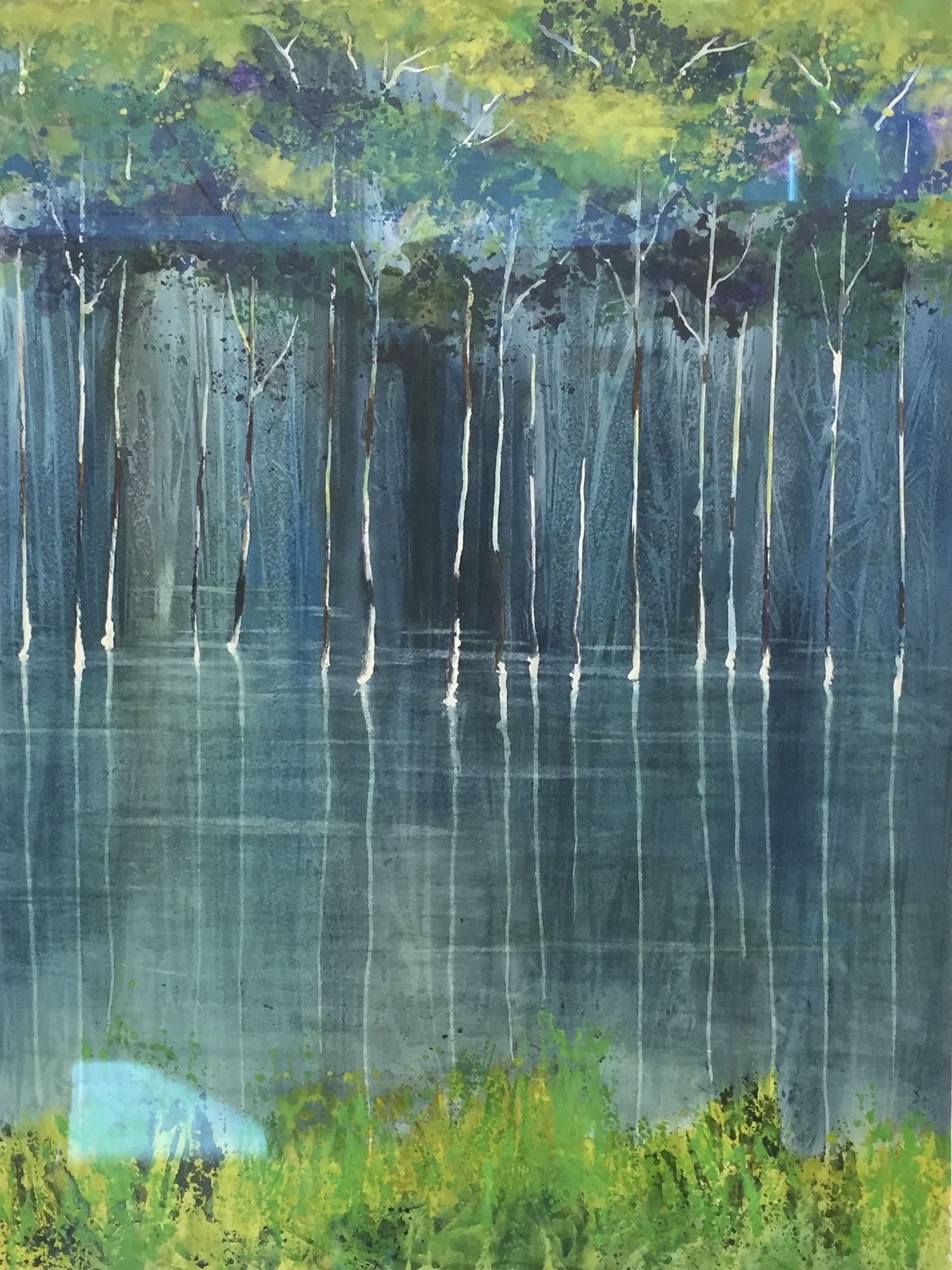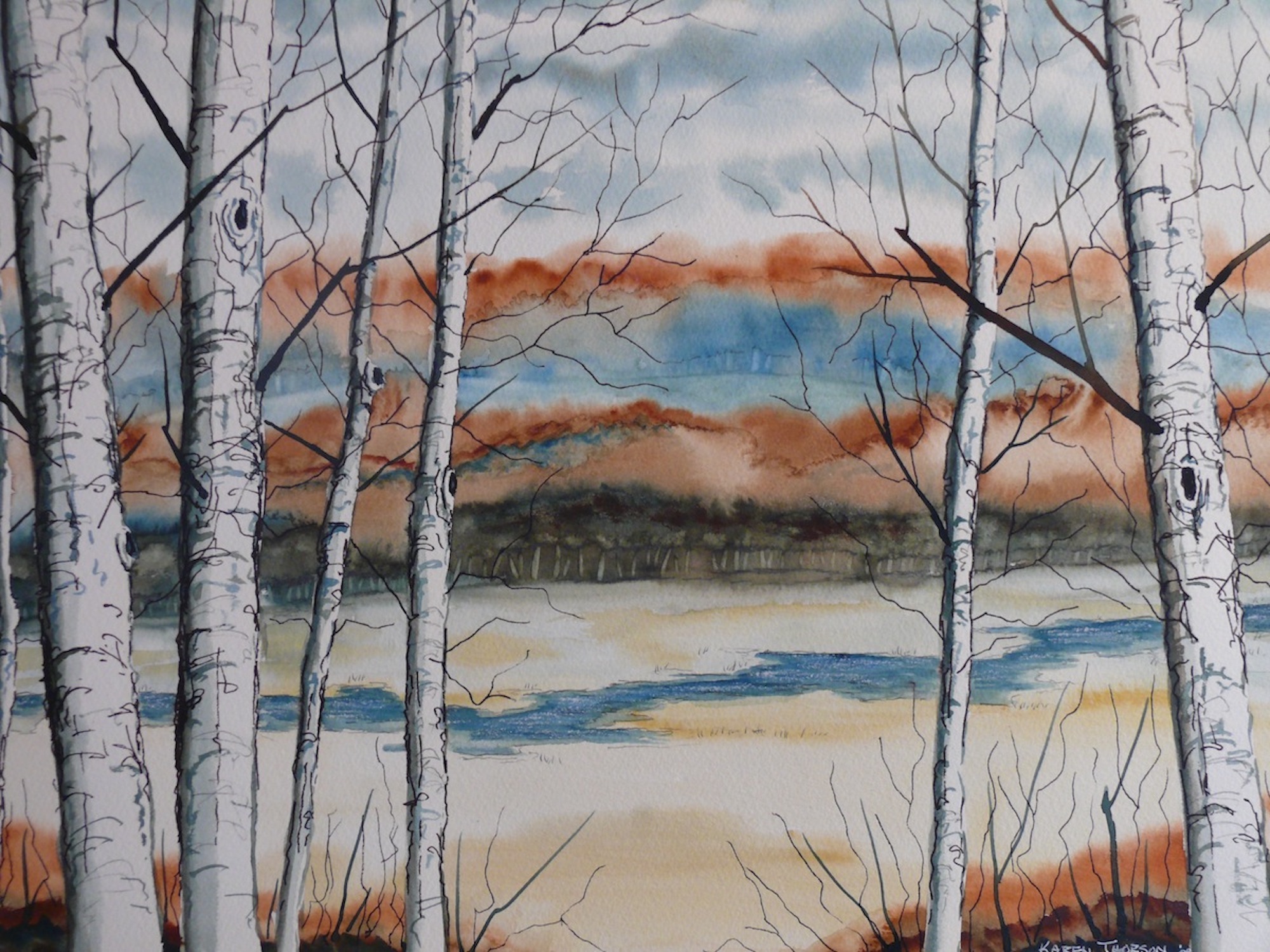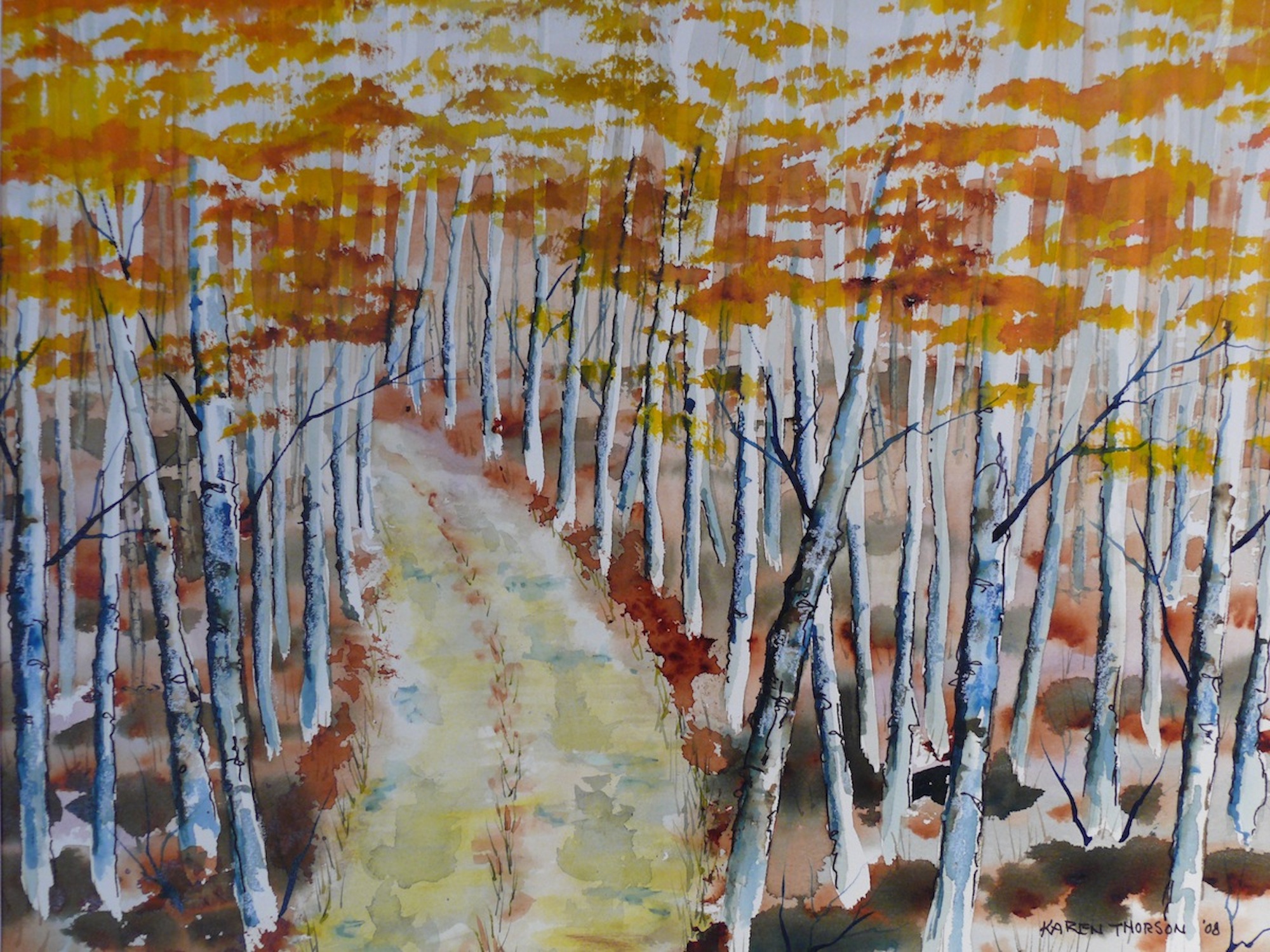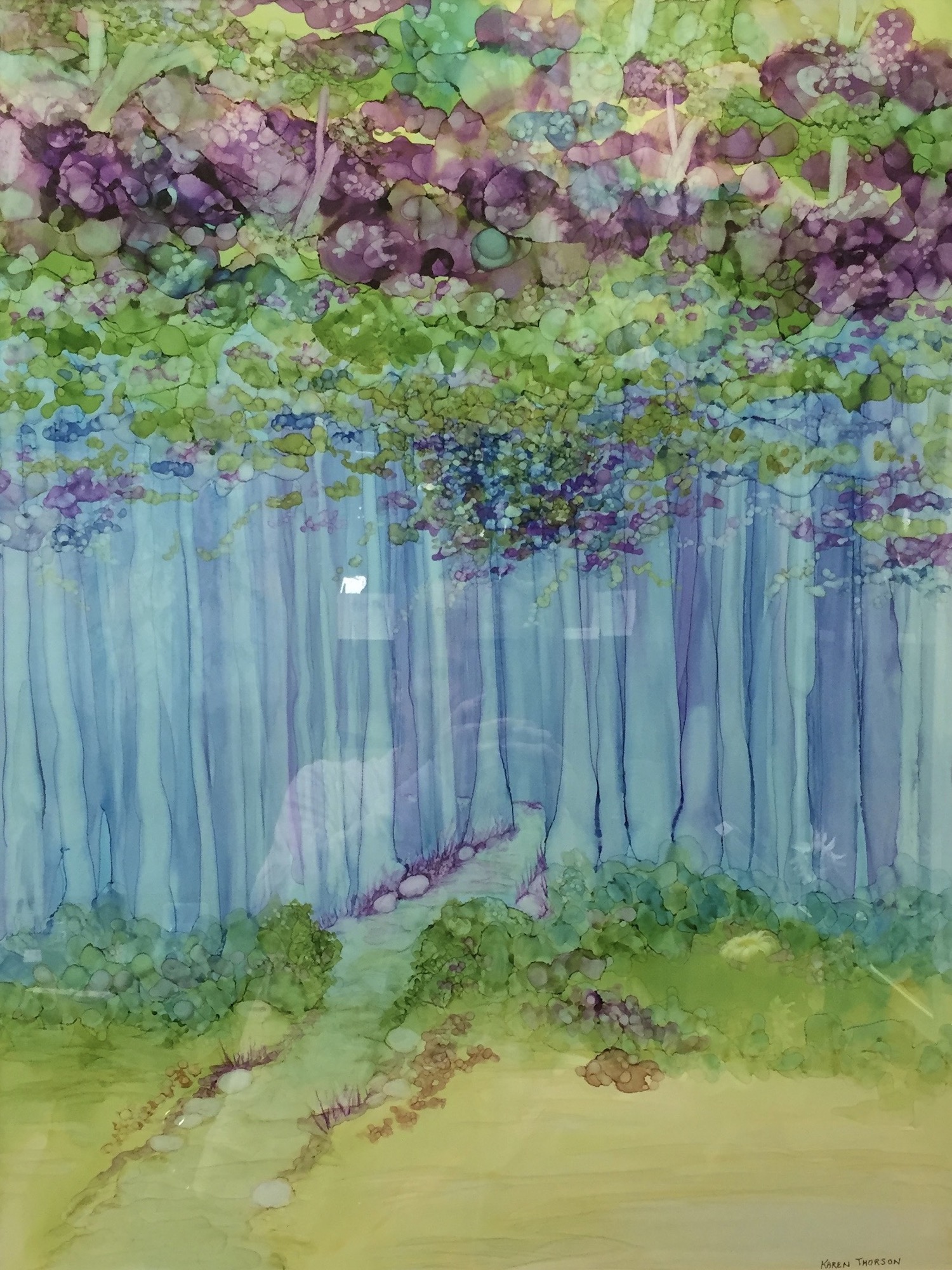
Oil Paintings

Above the Falls
At a gathering on a friend’s property in Montana, near a stream, someone said, “You need to go down the hill and see the falls from the front.” I considered this invitation, but decided that the view above the falls was to my liking. We are accustomed to see the water falling toward us, but the more interesting view, in my opinion, is the water going away from us.
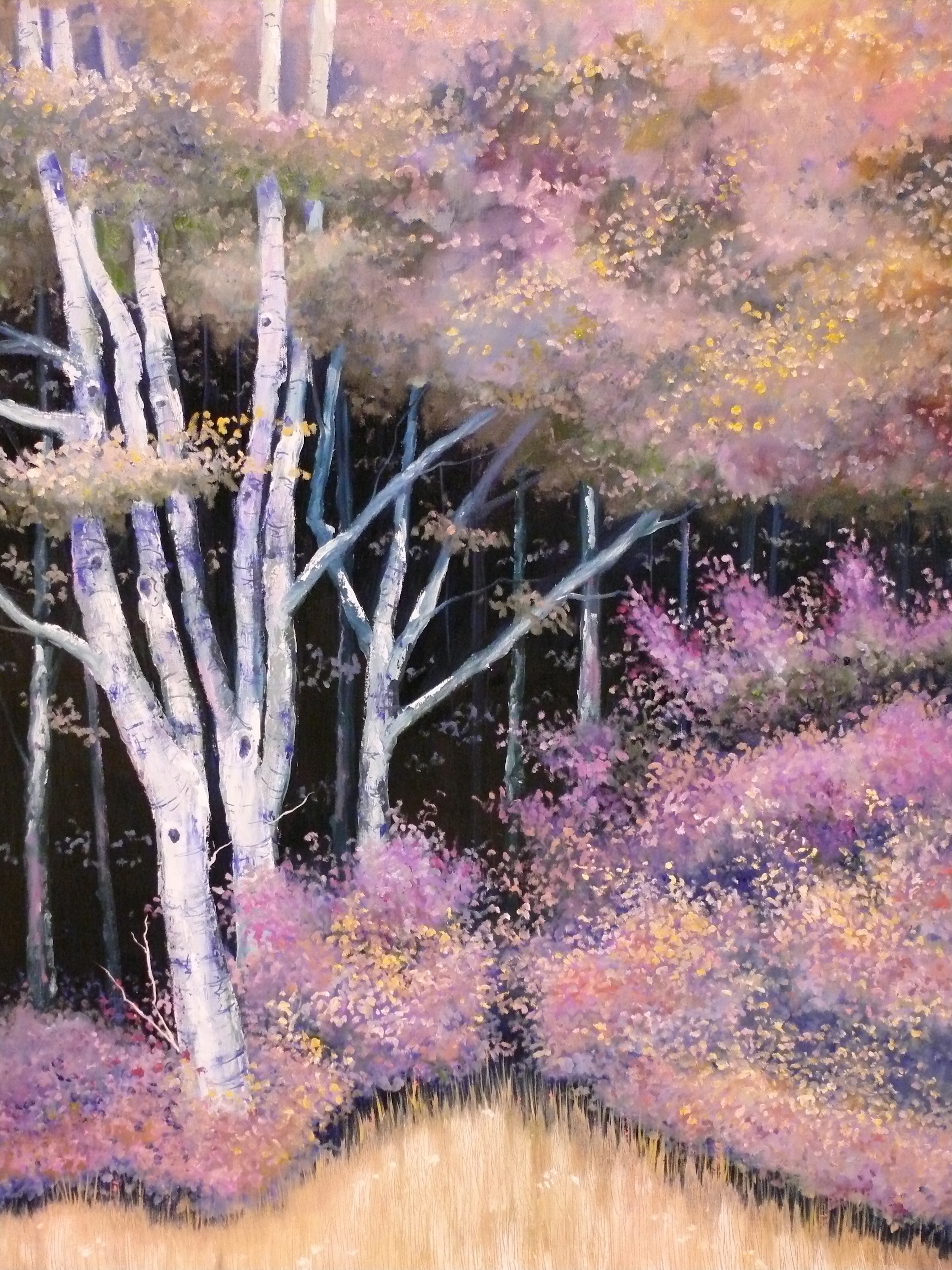
Dark Wood
This painting with the counterintuitive name was inspired by seeing the light bark of aspens and birch against thick dark forests in northwest Montana. While the wood of the tree in the foreground is light, the background is a dark wood; that darkness is what makes the light wood stand out.

Sunset Dreams
The setting sun often creates an illuminated landscape that is not what we see during the full light of day. Before we moved to Montana, I had such an experience with the landscape that was to become the view from our front yard. Everything was bathed in sienna. It was an image that stayed with me.
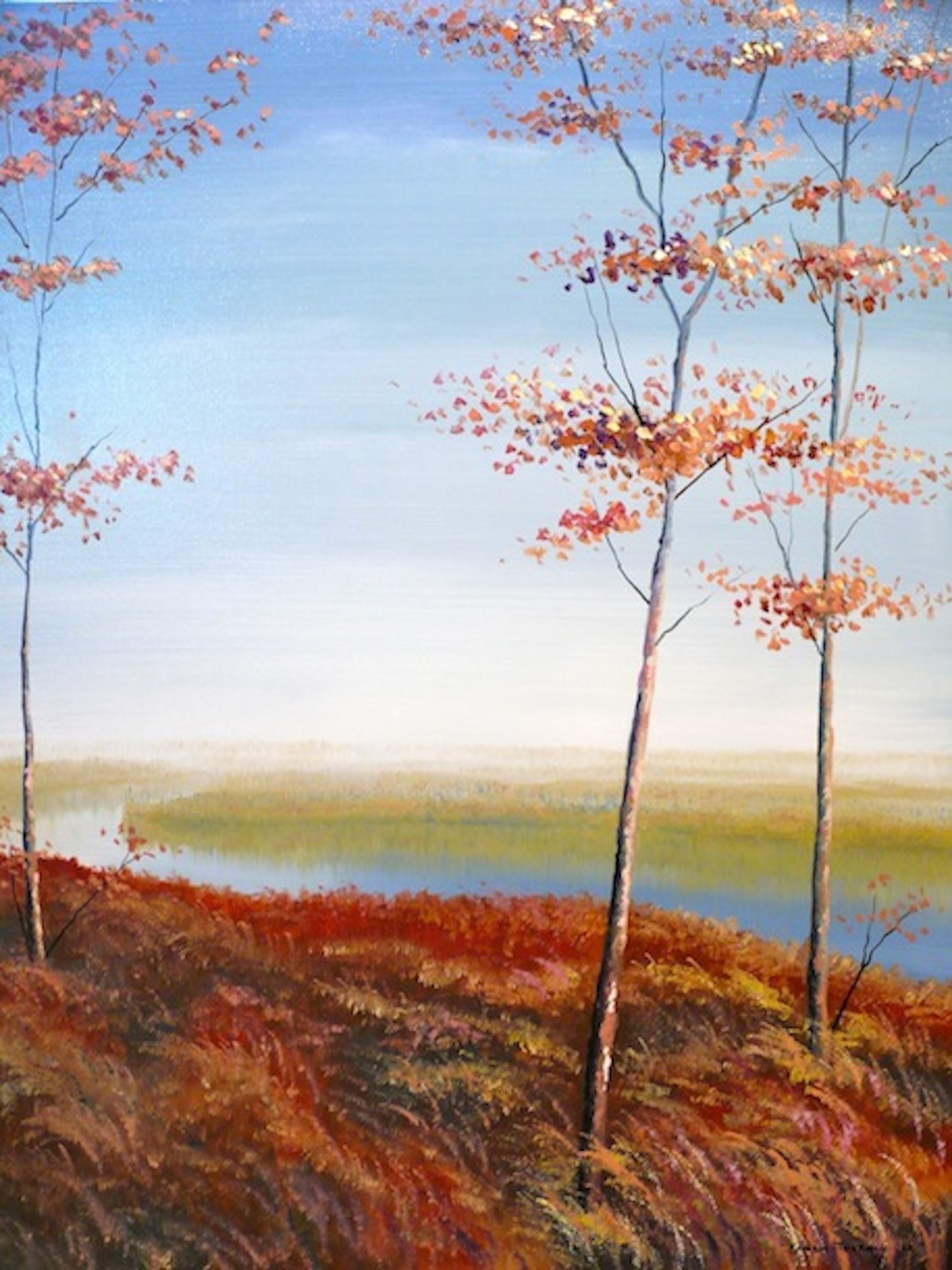
Missouri Bend
The mighty Missouri River crosses many states. Its path is winding and in some places its current is almost invisible. This view from a shadowed hilltop, shows the river as a powerful force, carving the land as it flows south. The sense of the river’s power is heightened by the nearby weak and willowy saplings in fall colors.

Beaten Path
We have all heard the term, “beaten path,” to refer to the route generally taken. We have all been told to “get off of the beaten path” or heard reference to someone or something as ”off of the beaten path.” Either way, this painting shows the beaten path created by wildlife across a hilly field.

Rural Route
Traffic in Montana ranges from heavily traveled city streets and highways to sparsely traveled back roads. This dirt road is not even named, so it is simply a rural route. In the mid-day sun, it climbs to the top of a rise and will soon drop into a river valley where the trees closely crowd. No real traffic out here.
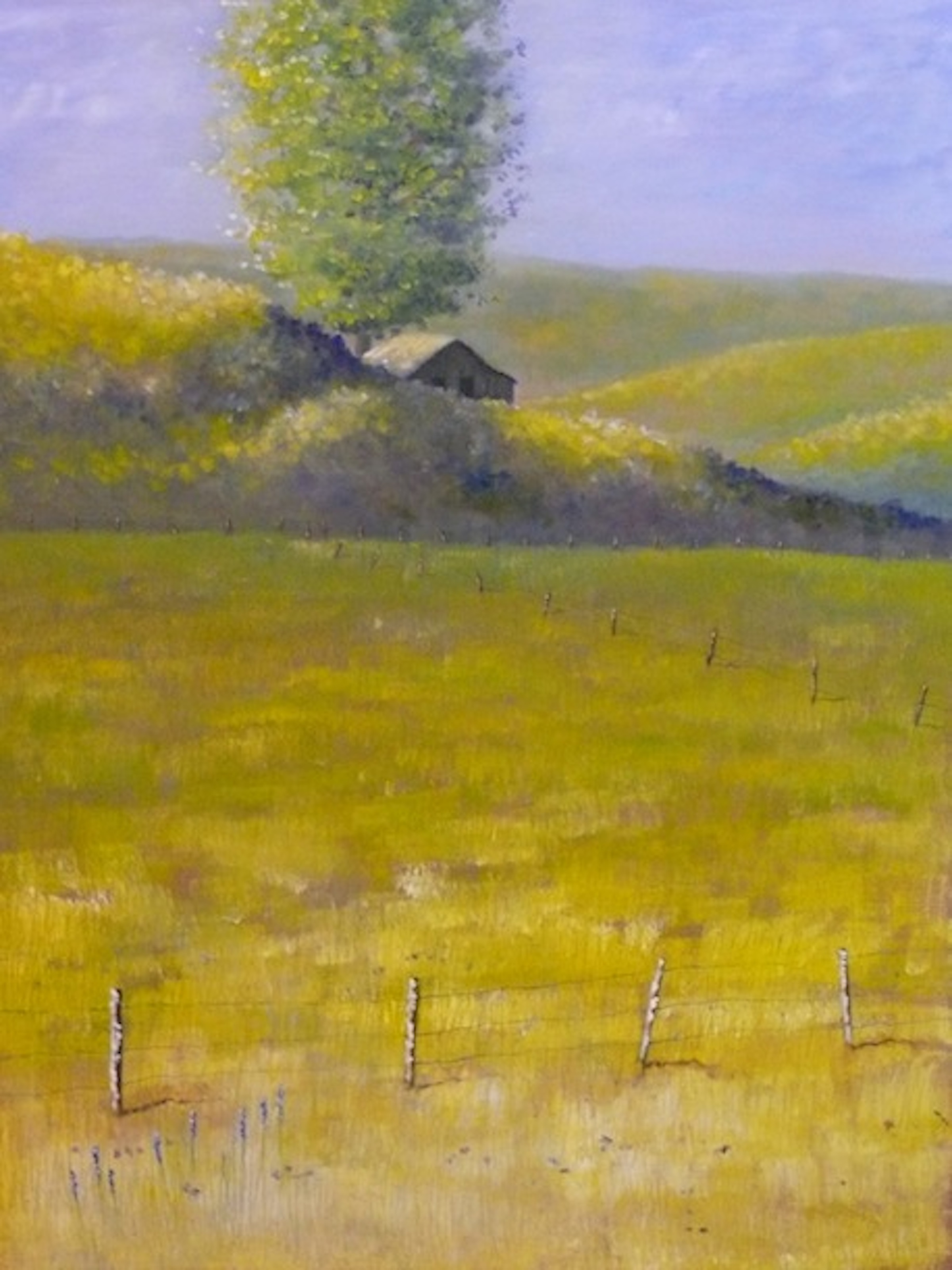
Highway 28
Similar to ranches and farms throughout Montana, this home near Hot Springs, Montana appears to be the earliest structure on the landscape. It seems to have been replaced quite some time ago with distant, newer structures. Yet it stands. Maybe no one wants to be responsible for erasing history.

Backwater
It is often the rushing water of a river that catches the eye, but the backwater of rives and streams has a beauty of its own. In this slow moving water, life flourishes, reflections are clear, and there is a peacefulness that faster moving water does not have. Backwater is its own microenvironment.

Farm Road
Even in the heart of winter, the work on a farm or ranch must continue. In Montana, it is often said that the outbuildings are larger than the homes. That is easy to understand when you consider the type of equipment needed to carry hay to the cows in distant fields or to haul things to market.
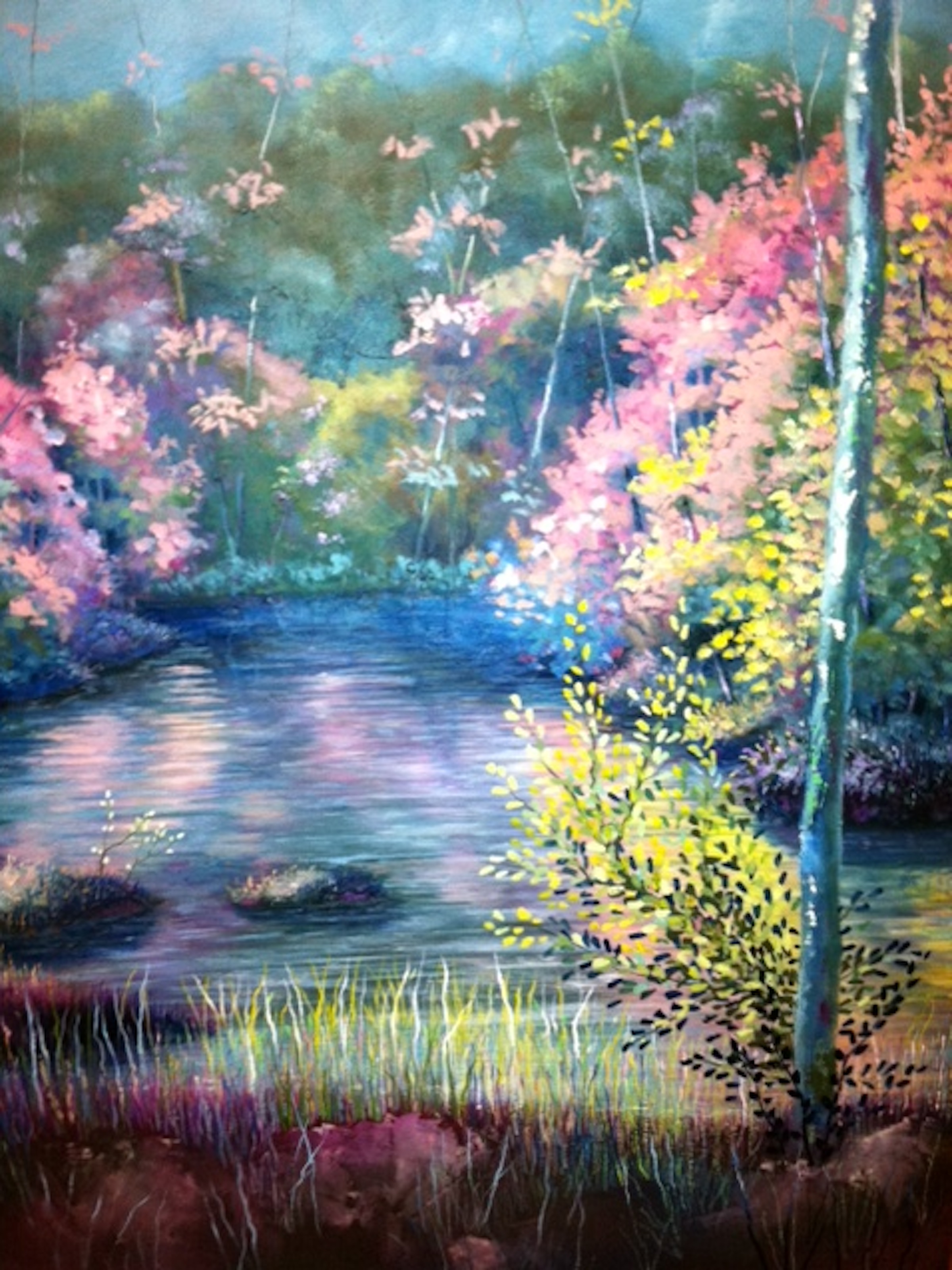
Whisper
The west fork of the Combest Creek runs through pasture and into a lightly wooded area before it crosses under a county road and flows into the Clark Fork River. It forms what local residents call “the ponds,” which are a series of small water features. In early morning light, the whole area is pink and quiet, like the whisper of the day before the sun shouts.
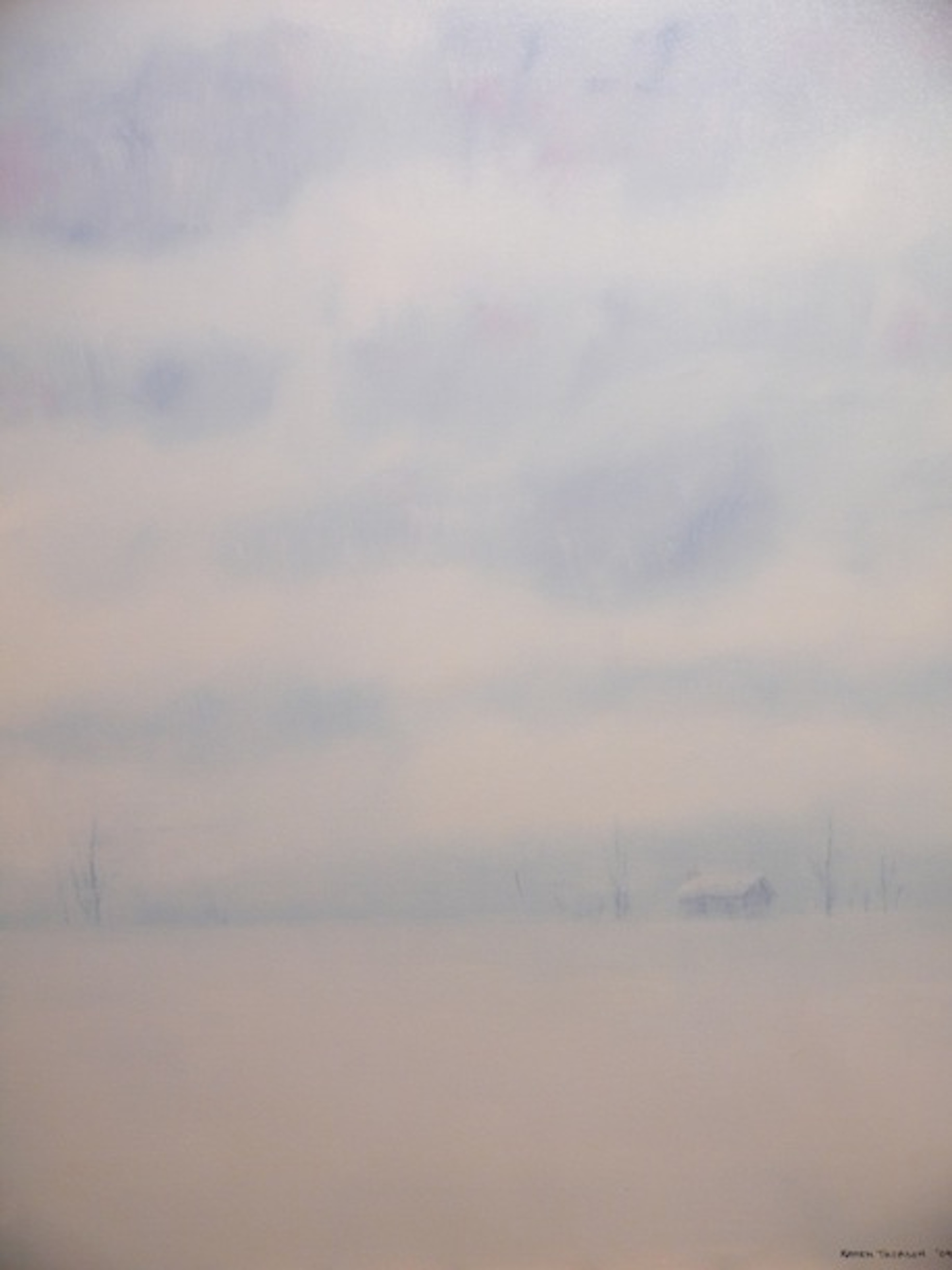
Blizzard
Winter weather in northwest Montana can be brutal. In a matter of minutes, the softly falling snow that invites us outdoors to play, can be replaced with a virtual “white out.” This small house on the edge of an open field, is almost obliterated from sight by an unexpected blizzard. No one wants to be outside in this.

Exhibitionists
These trees along River Road West in Plains Montana, are in their brightest fall colors. Other nearby trees have not made this transition yet. If those nearby trees had thoughts, they would think these red trees are overdoing things a bit, being flashy, becoming exhibitionists. In truth, those red trees are just ahead of the game.
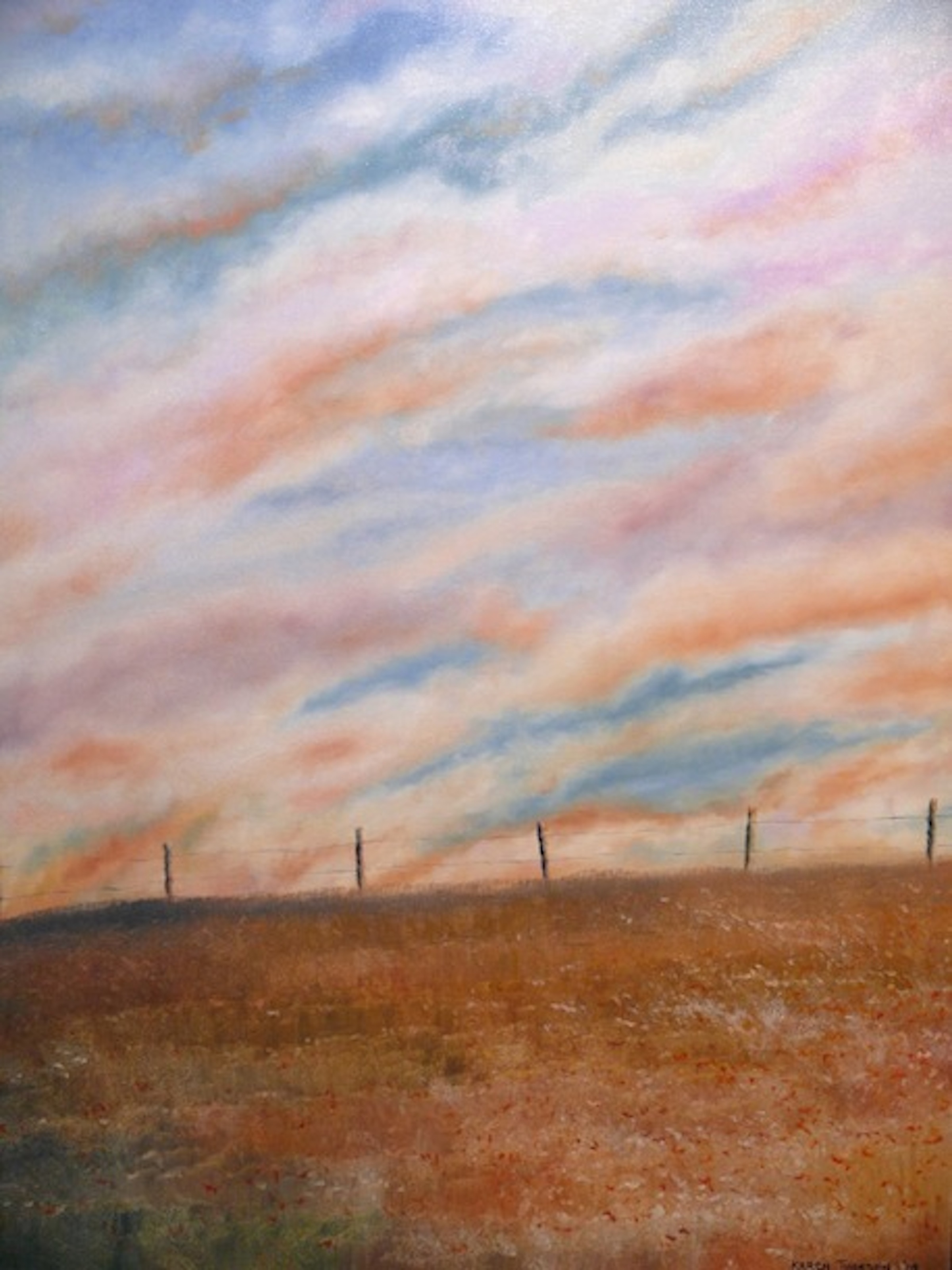
Beyond Limits
Mountains and hills line the highways and country roads in northwest Montana. This fence, like many others, running along the top of a ridge, with nothing visible beyond, looks like a boundary, a limit between what we can see and the unknown. It makes the us wonder what is beyond those limits.
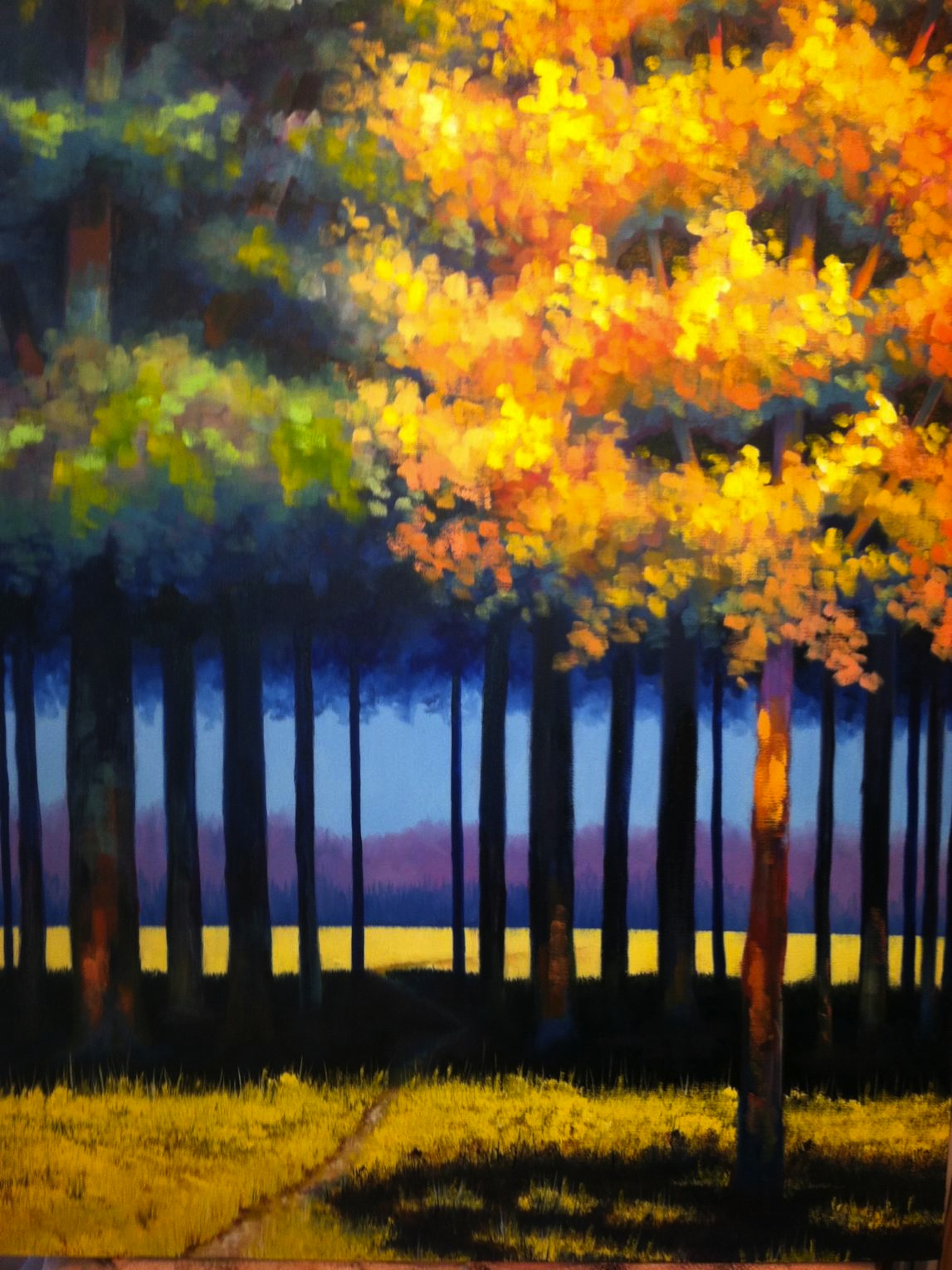
From Here to There
This stylized autumn scene was inspired by a group of shade-casting trees dividing two sunlit fields. The patterns made by light and leaves showed strong vertical and horizontal lines, so the brushstrokes are all vertical or horizontal. The path is how the animals travel from here to there.
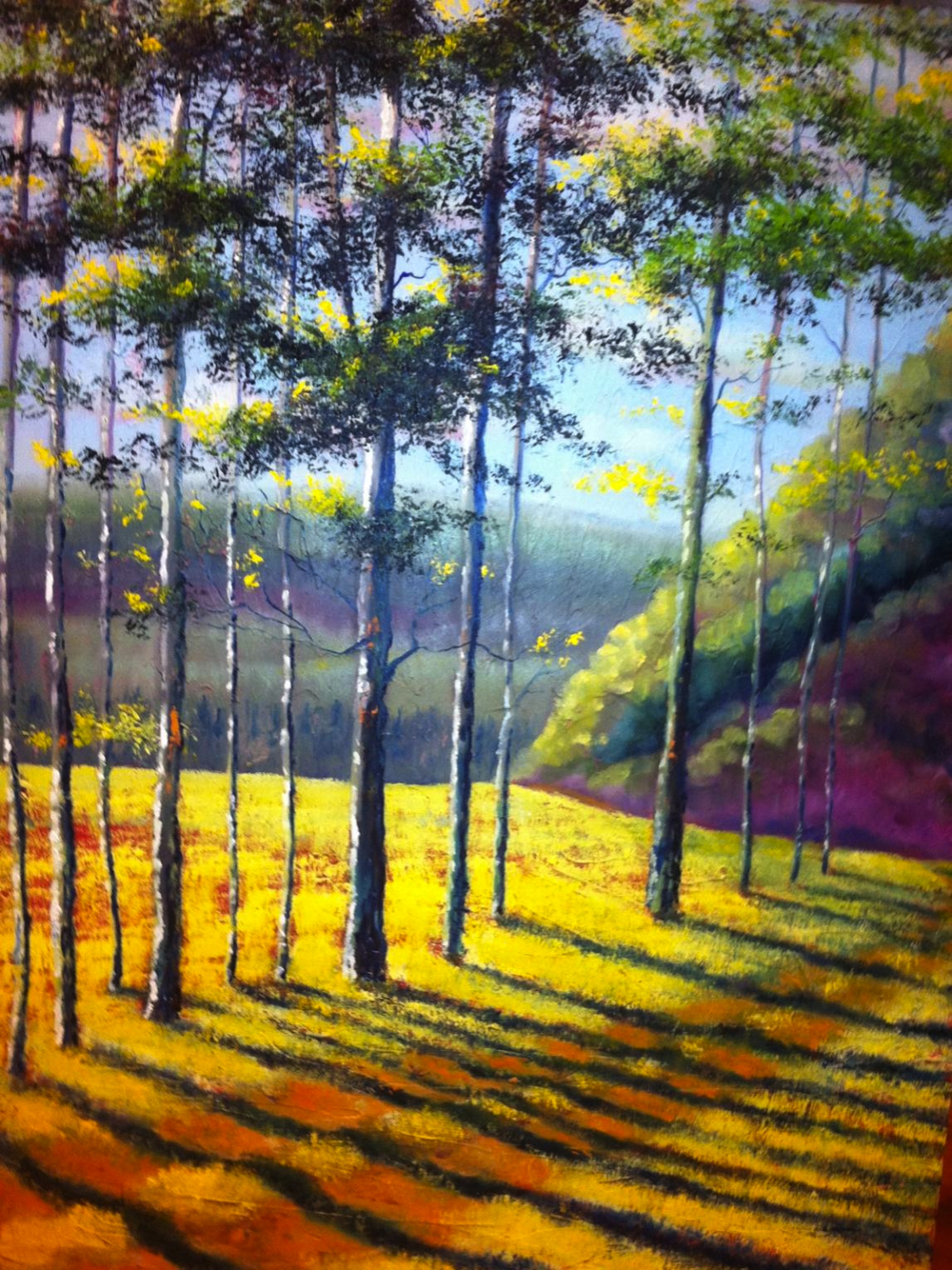
Shadows
Early evening sunlight in Montana’s late fall is intense. These tall trees between an open field and a dirt road are in perfect position to cast singular shadows. The warmth of the sun on the field belies the coming of cool weather, but the shadow on the nearby hillside forecasts the coming change in temperature.
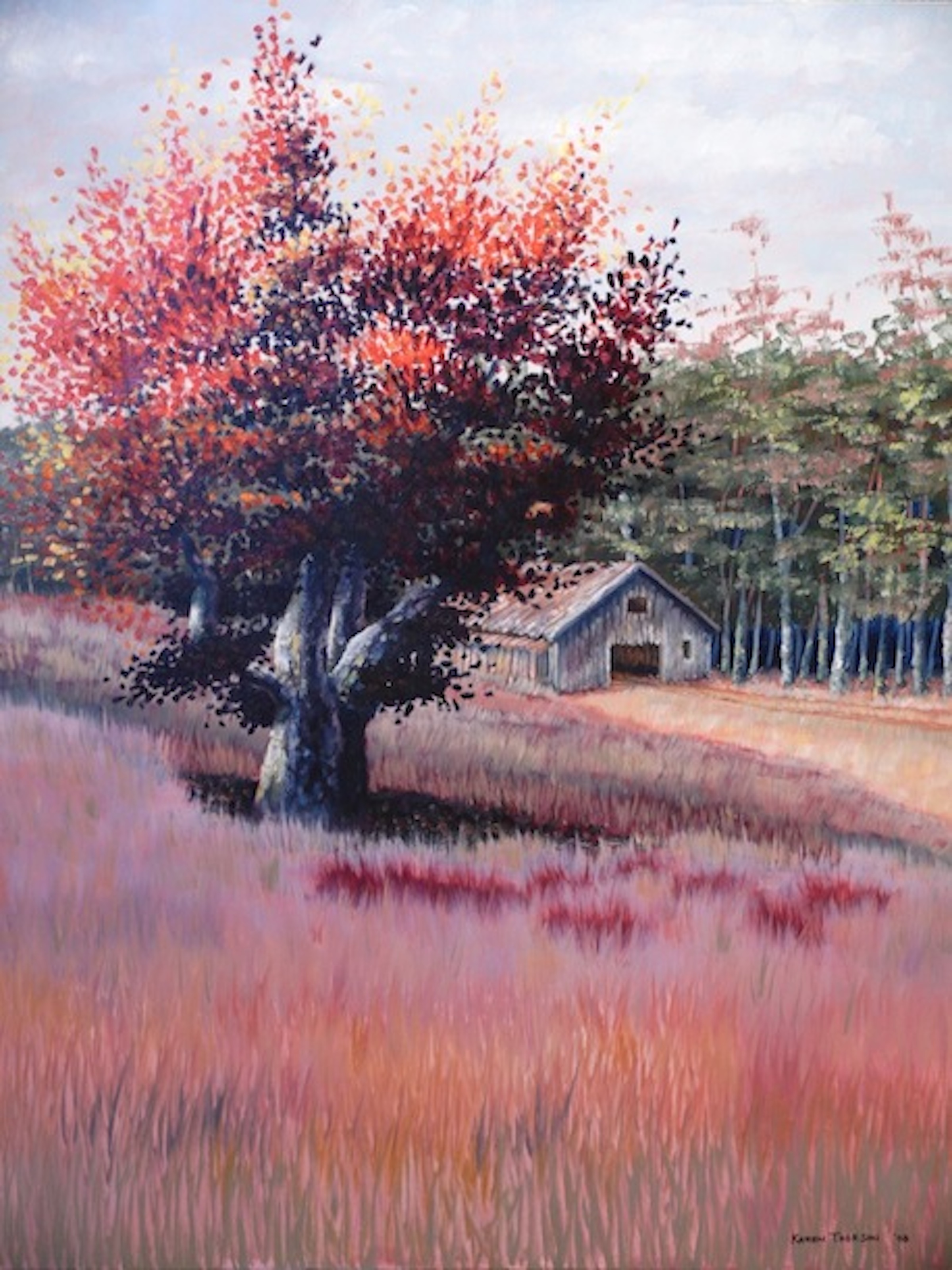
Autumn Dress
In a field near Dixon, Montana stands a thick, squat tree. In the spring and summer it is barely detectable against all of the green around it. In the winter its skeletal form draws little attention. But in the autumn this tree puts on her best and brightest; she steals the show for a few weeks.

Tributary
The Lower Clark Fork River has one name, but it moves water contributed by other rivers and many streams, some named – some not. This side channel of the main river funnels water from a series of streams into the main channel of the river, giving it more water and more of the essence of the landscape that contains it.
Acrylic
These paintings are the result of a 14-day residency in the Bob Marshall/Great Bear Wilderness

Earth
The earth in the Great Bear Wilderness along the Middle Fork of the Flathead River had both an intimacy and a vastness. The intimacy comes from seeing small parts of a scene; the vastness from seeing the overall expansiveness of cliffs, ledges, mountains, and valleys. This composite painting shows the high cliffs of Trinity Mountain, the rock ledges near Granite Cabin, and the valleys that are the hallmark of the area.
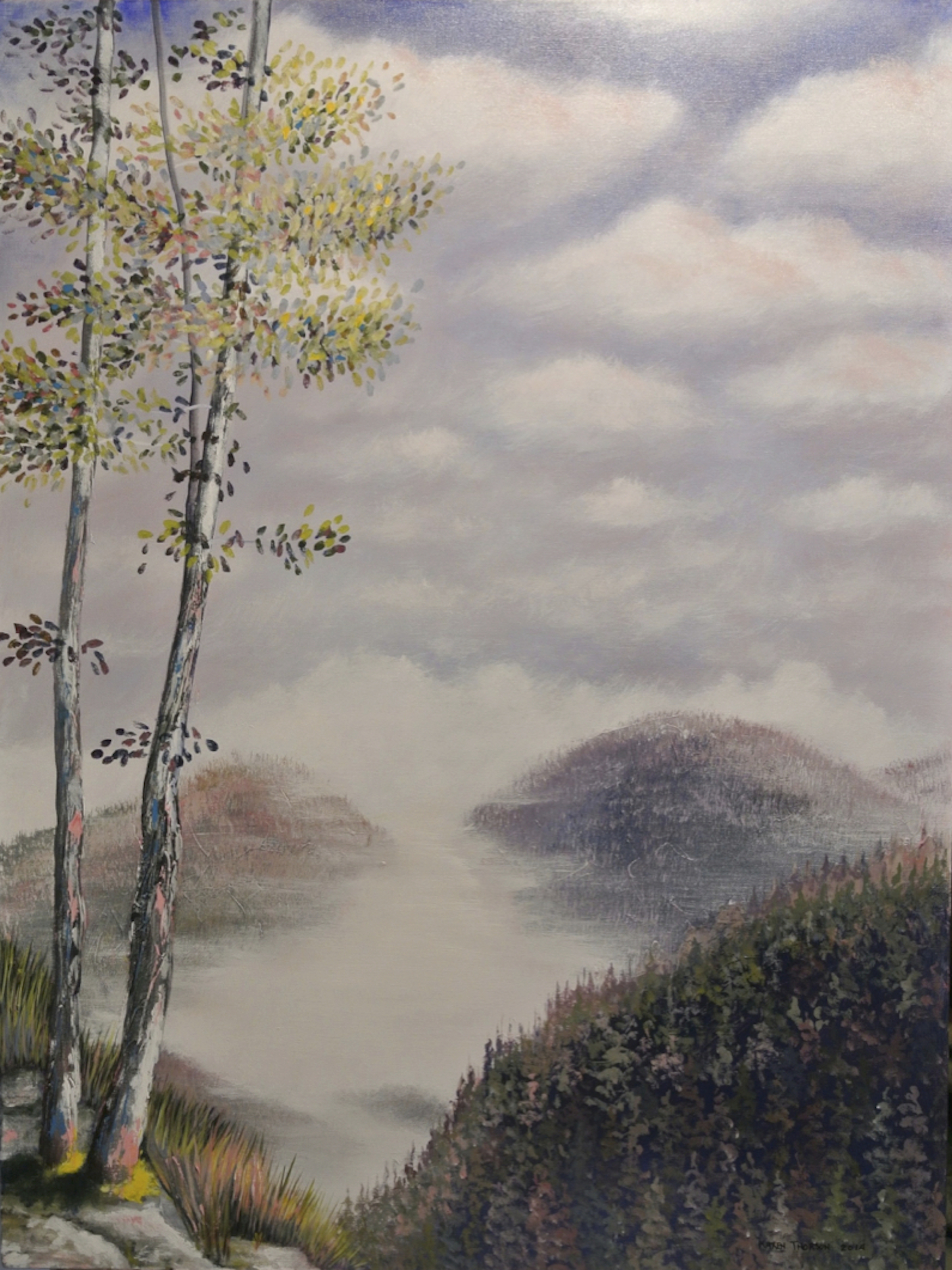
Sky
The sky in the Great Bear Wilderness along the Middle Fork of the Flathead River was ever-changing. It moved mysteriously from clear, brilliant blue expanses, to puffy clouds, to thunderheads, to mist and fog. The mountains and valleys in the Granite Cabin area create a microclimate that is often difficult to predict. This composite painting incorporates the innocent cumulus clouds that floated over the river valley almost daily and the mist and fog that brought the sky to the earth.

Wind
The wind in the Great Bear Wilderness along the Middle Fork of the Flathead River was from upstream each morning; in the evening it changed and came from downstream. You could hear the wind pushing through the conifers (pine, hemlock, spruce, fir, larch, and cedar), but you could “see” the wind in the hardwoods (aspen and cottonwoods). This composite painting incorporates a single Cottonwood on a ledge near Granite Cabin, the conifers on hillsides all along the river valley, and hardwoods that dotted the riverbanks.

Water
The water in the Great Bear Wilderness along the Middle Fork of the Flathead River came from everywhere: small streams, large creeks, and of course the river itself. Two days and nights of rain caused the streams, creeks, and the river to rise from their late summer levels. This composite painting incorporates Twenty-Five Mile Creek as it flows from mountains high above the river, the steep dirt banks that many creeks carve, and the rocks (large and small) that have been rounded over time by the constant force of water and are visible in many locations.
Watercolor
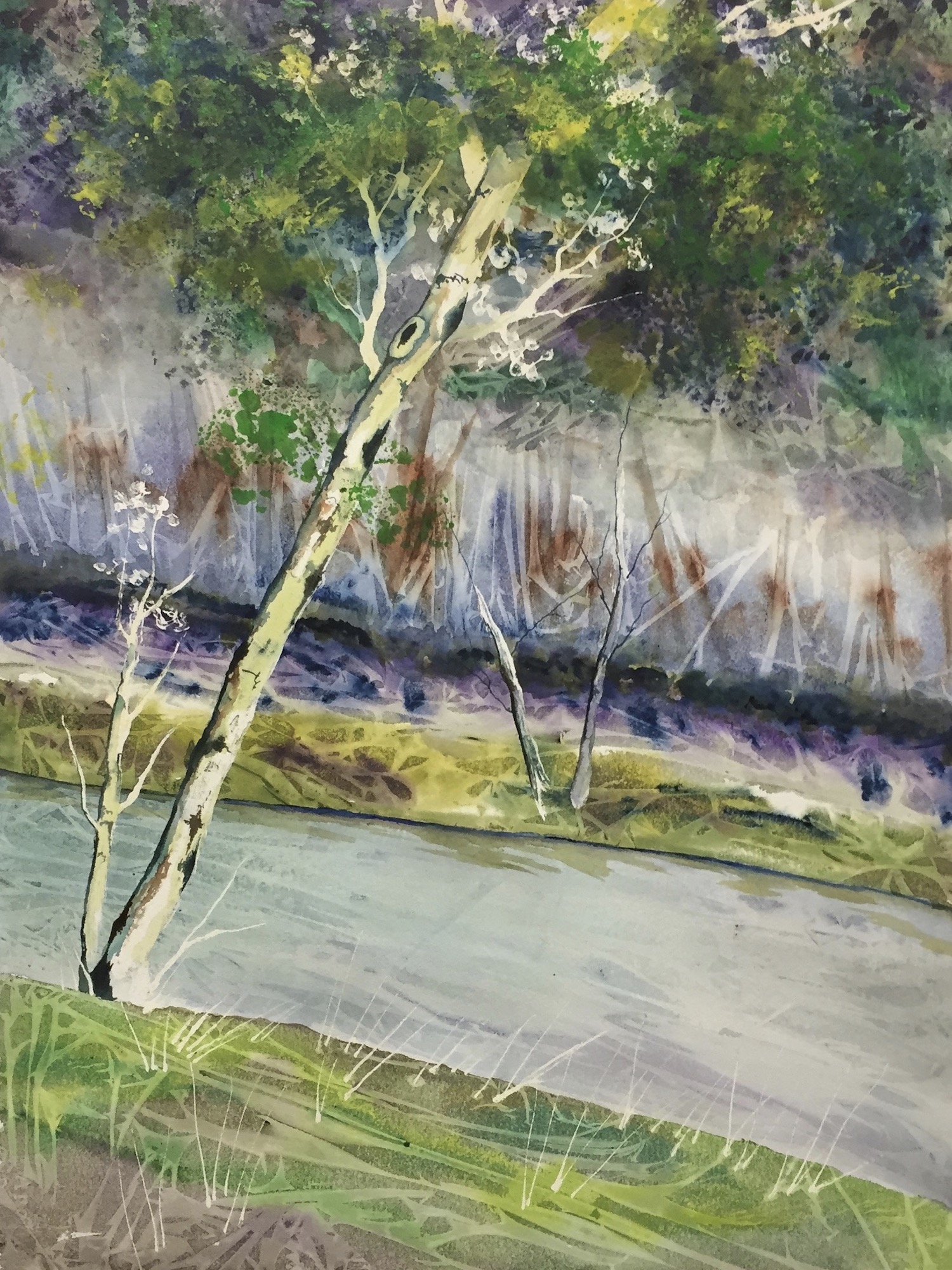
A Stream Runs Through It
Everyone in Montana knows “A River Runs Through It.” For many, a river does run through or near their land. More likely, however, a stream is their connection to moving water. This scene is in the Clark Fork River Valley and the stream is a reminder that the mighty river draws its mightiness from many tributaries.
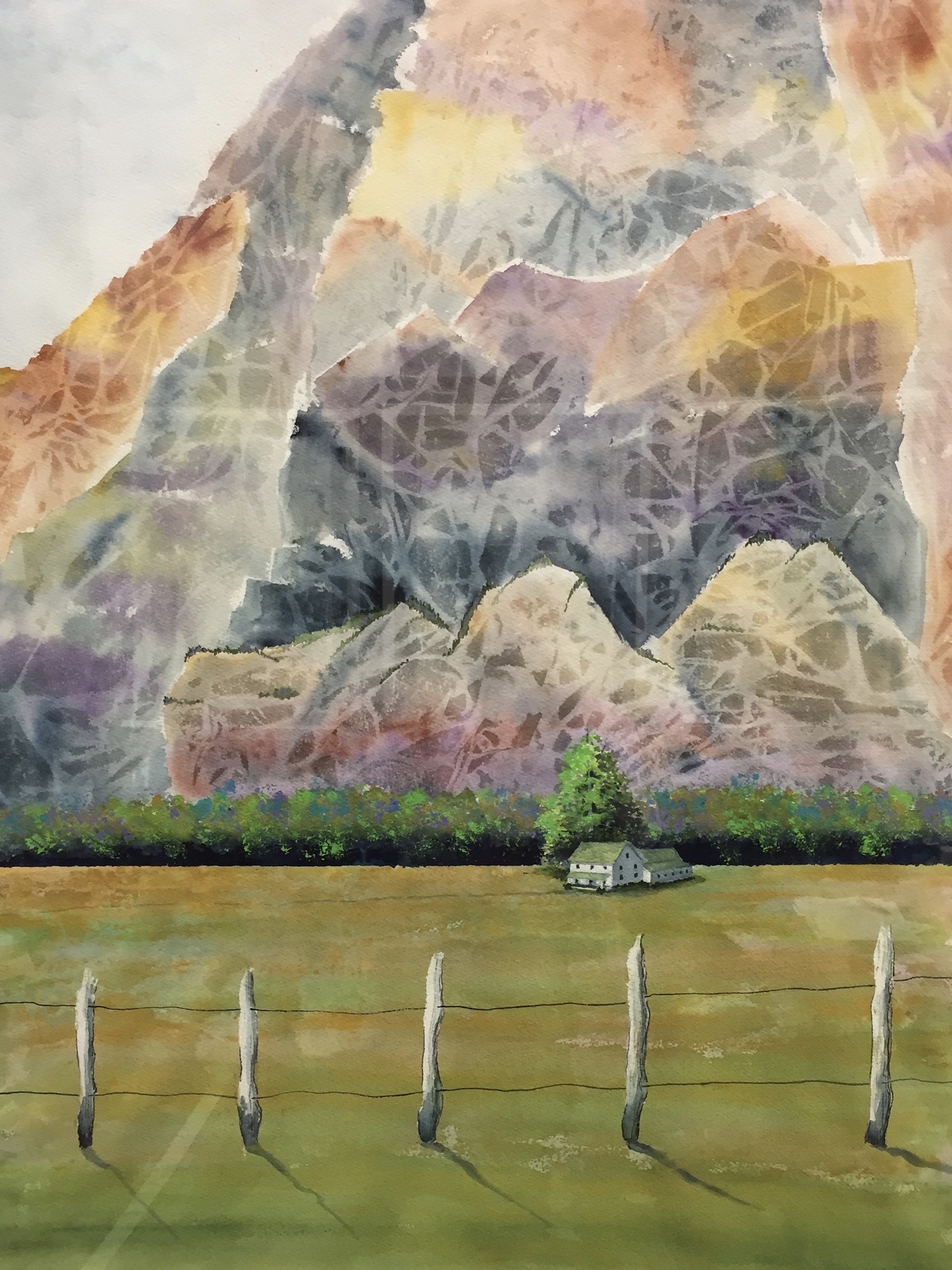
Overshadowed
The cliffs and mountains of the Northwest are mighty – towering above river valleys and fields. We are distracted with living, worrying, and being busy with often mundane day-to-day responsibilities. If we stop to look at those awe-inspiring cliffs and mountains, they overshadow us into insignificance.
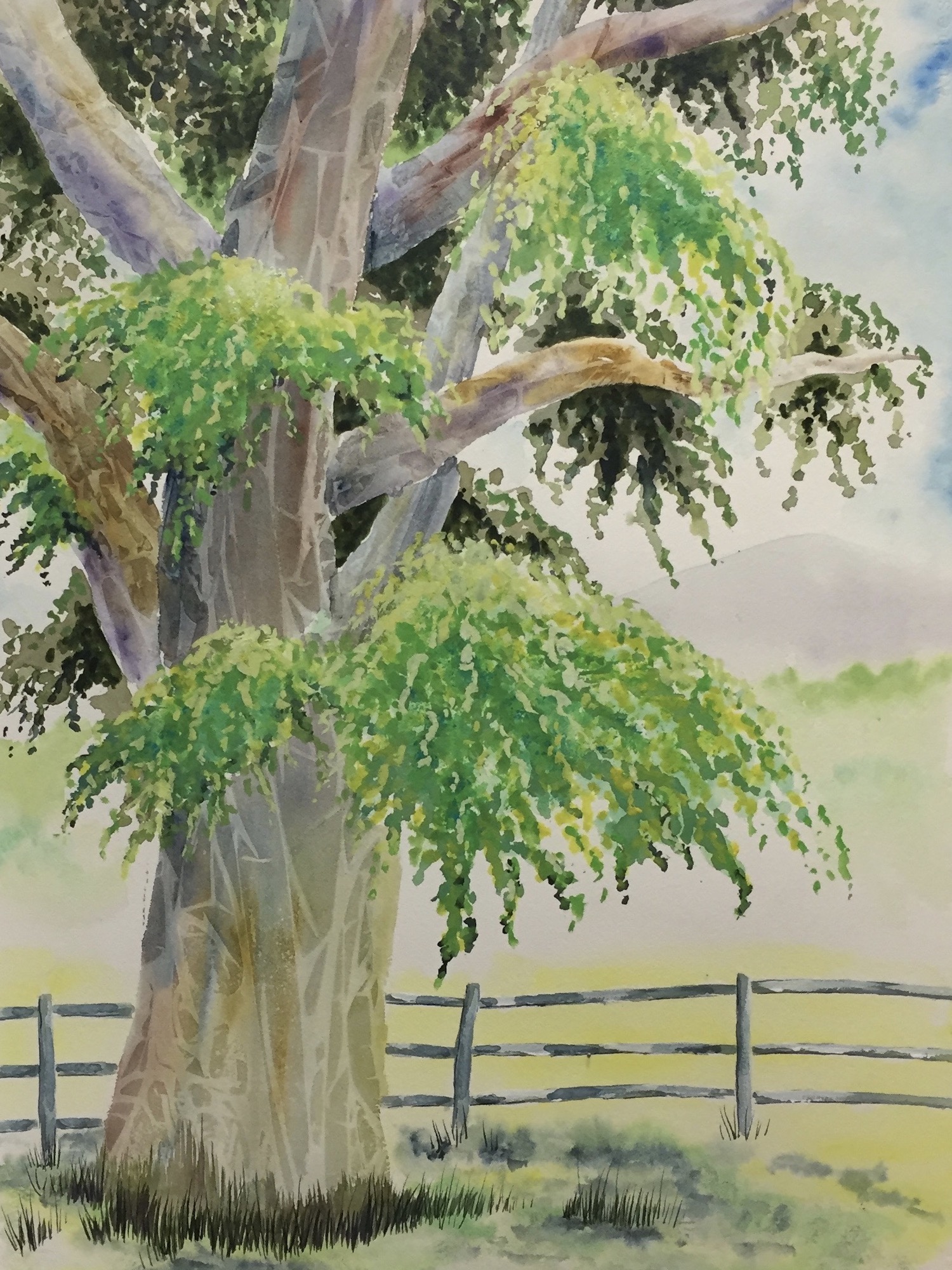
Still Standing
This lovely Black Locust tree is still standing after more than a century. It quietly overlooks a river valley. It could give us such a rich glimpse into history if it could talk. But it is silent and we can only imagine what it has seen – first kisses, children growing, and life changing all around it.

Trees at Two Medicine
Driving home from Canada, we went through Two Medicine, near Browning, MT. The scenery was beautiful. When we reached Two Medicine, the landscape seemed to come alive with slim-trunked, pale-barked, gnarled trees. There were so many of them, so close together, they were like a gathering of kindred souls.
Alcohol Ink

Secret Hollow
Young children who have access to “the woods” often find a place that they claim to be theirs. It may be called a “fort” a ”hideout” or a “secret place.” Whatever they call it, it holds special meaning and to them may be “enchanted.” It sets the children apart from others and gives them special status when they are there.




